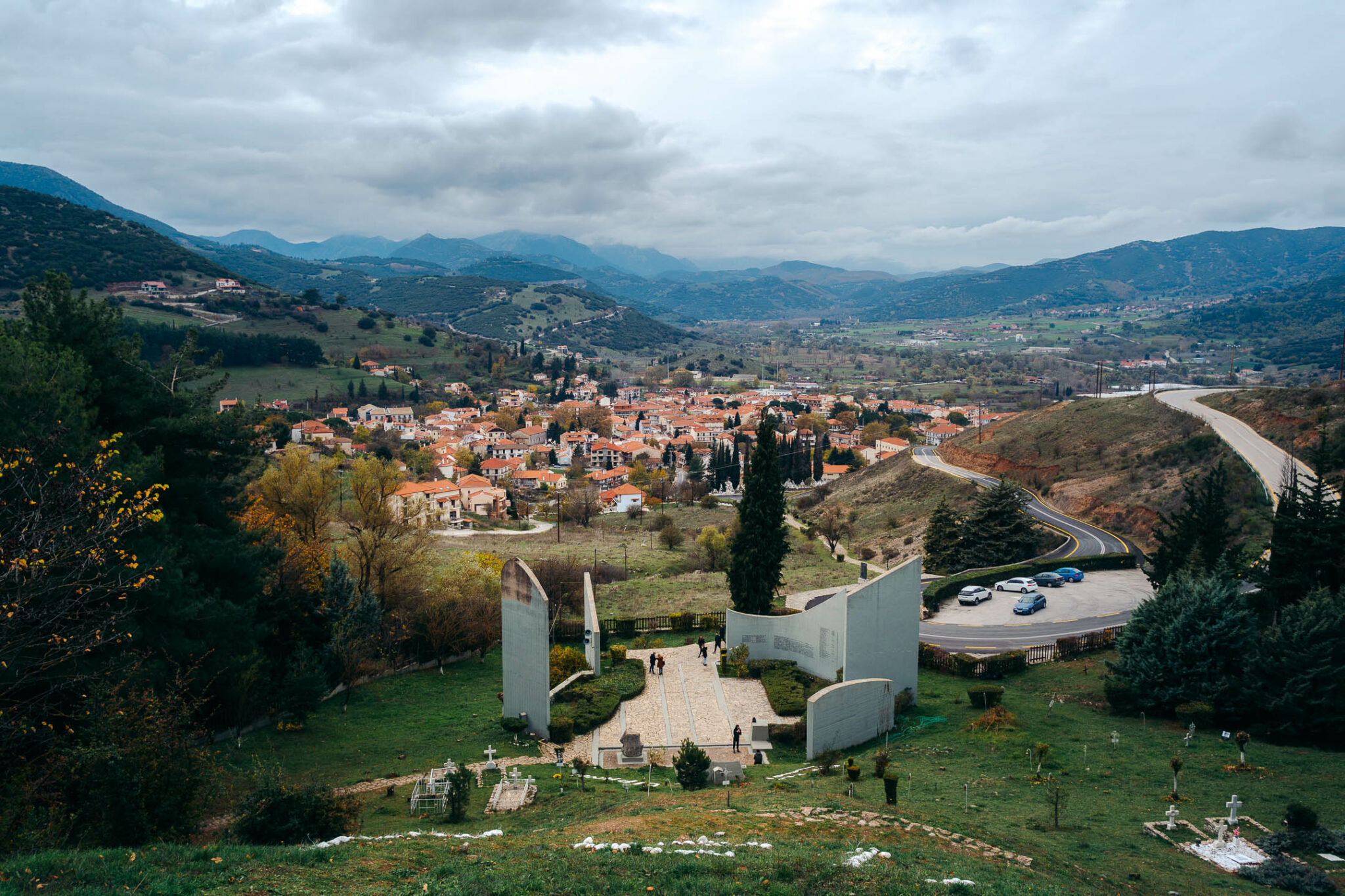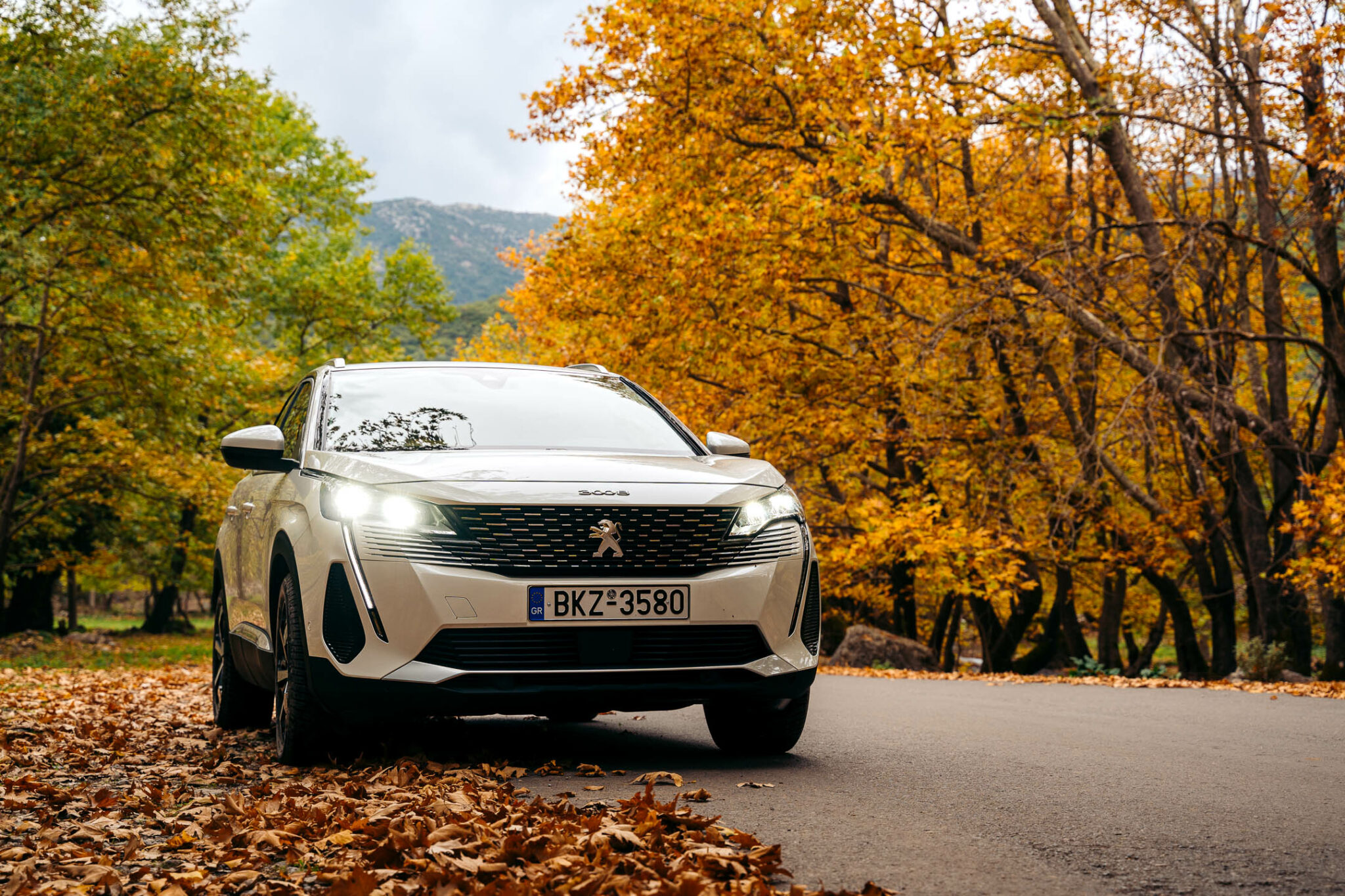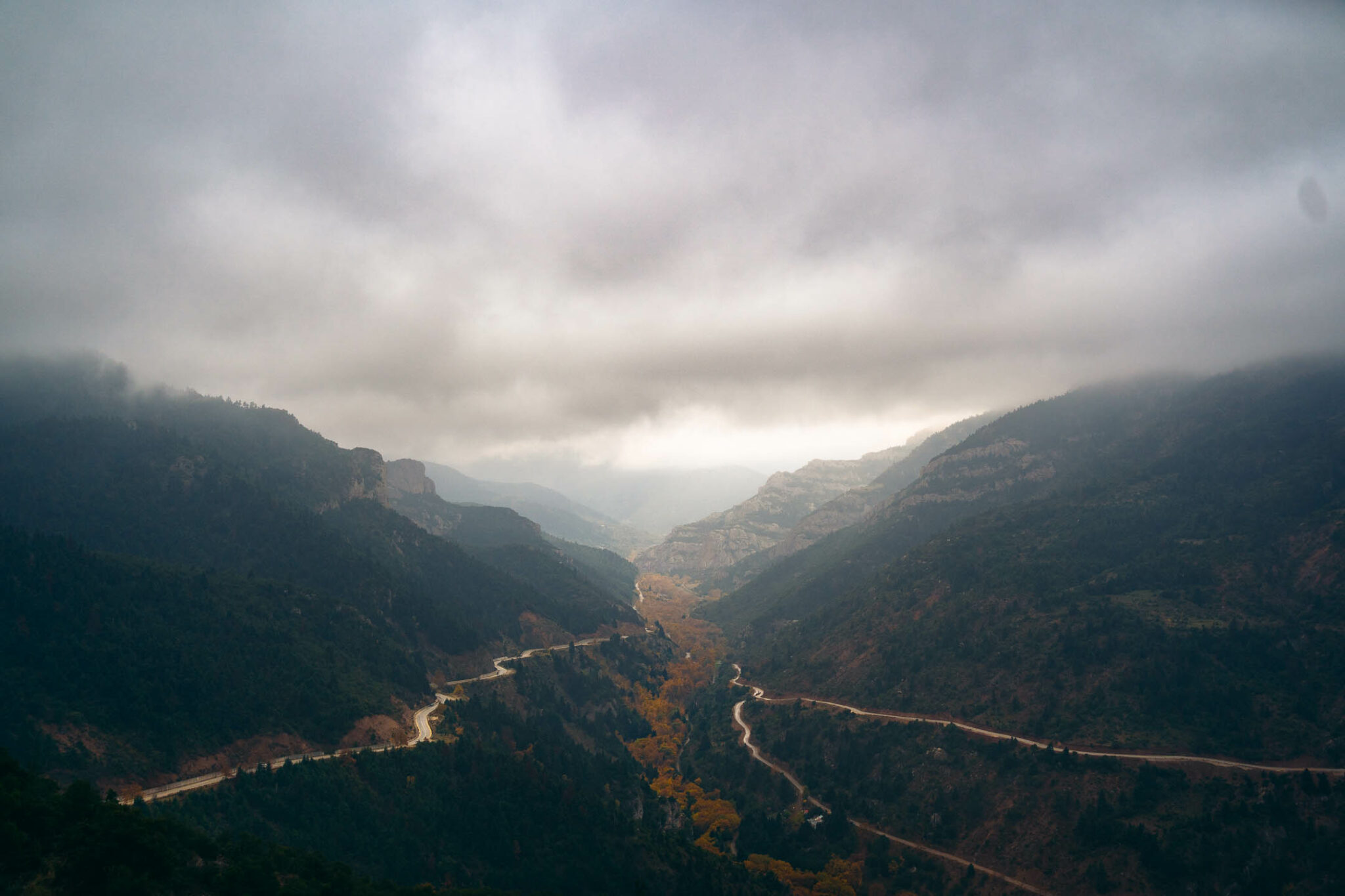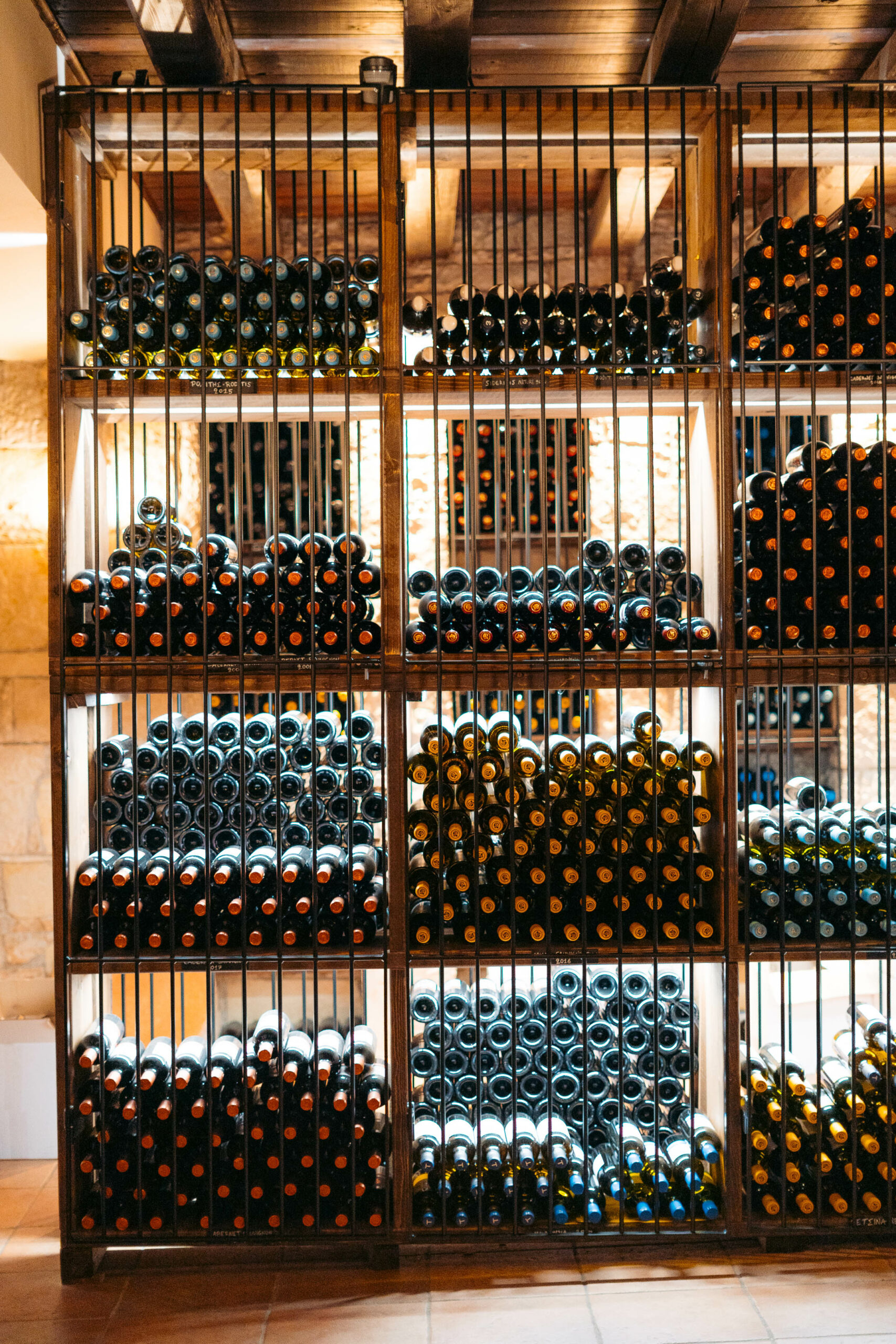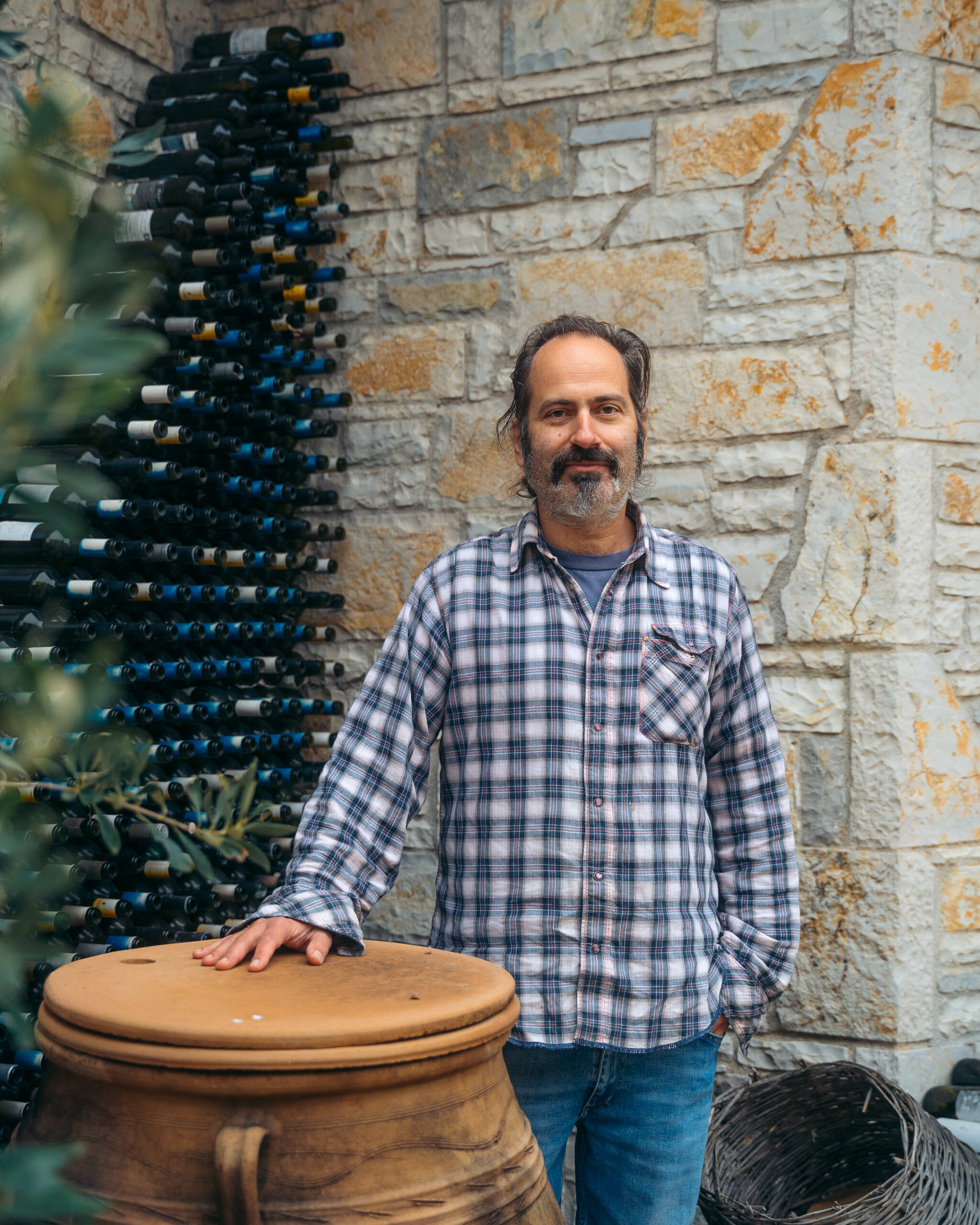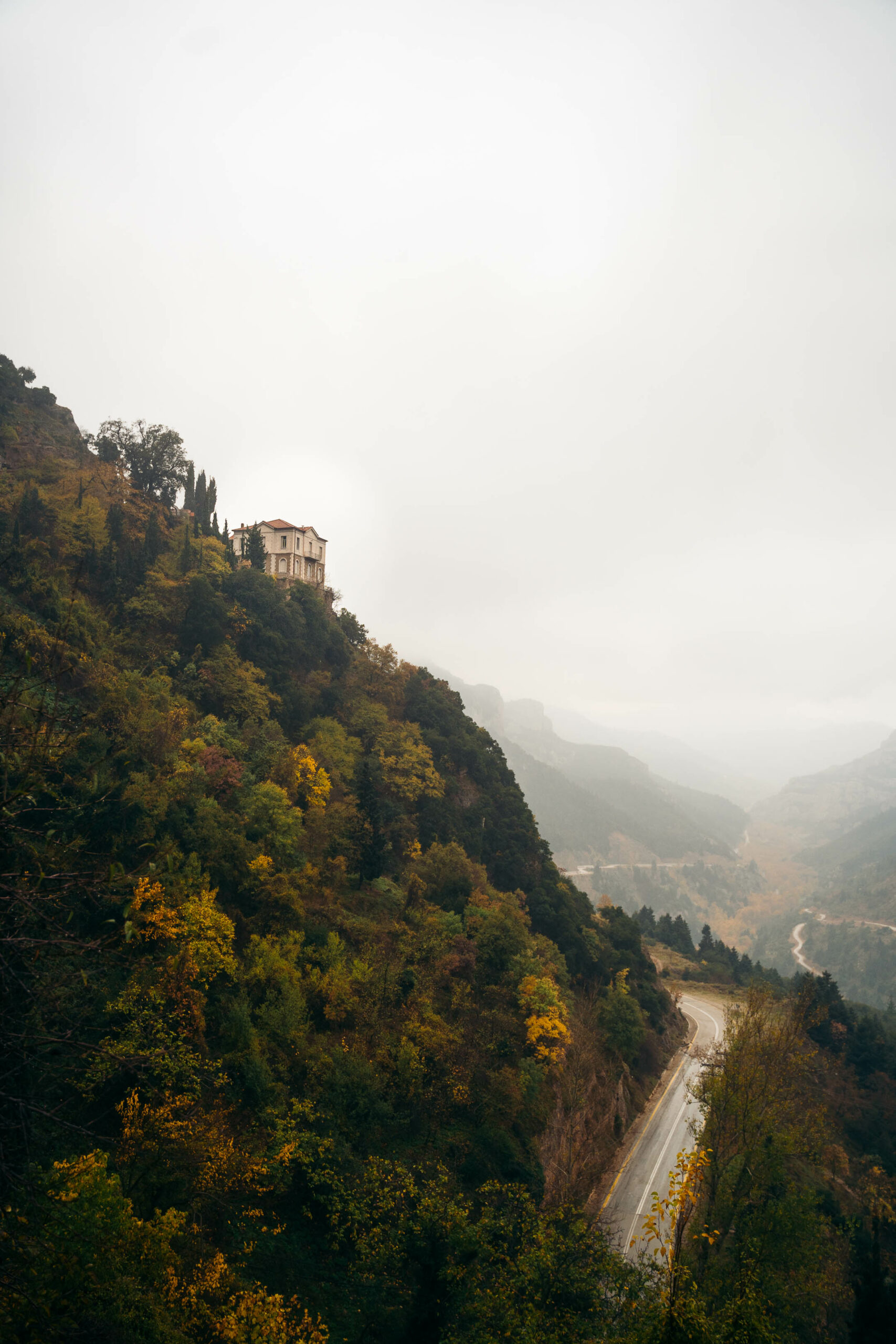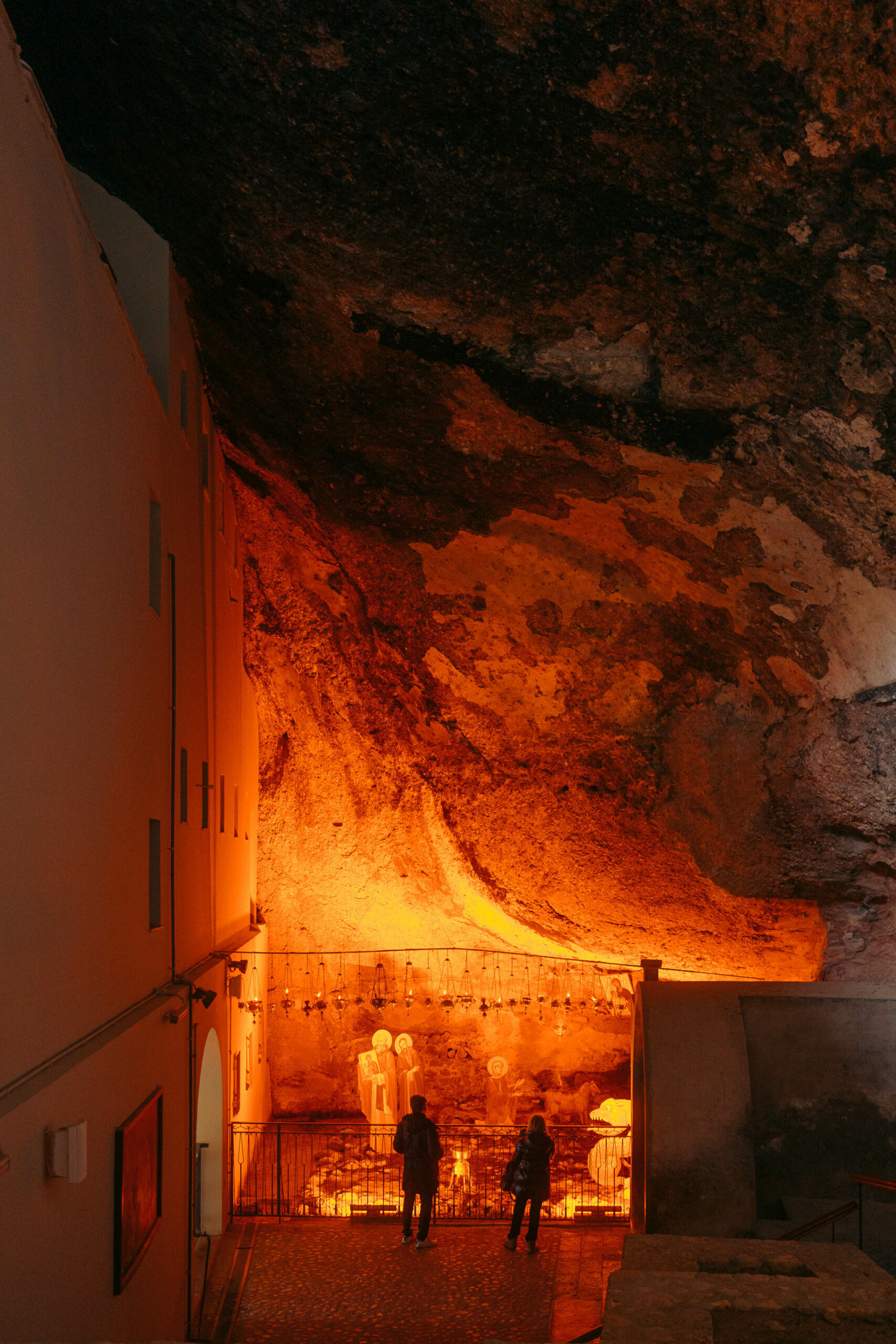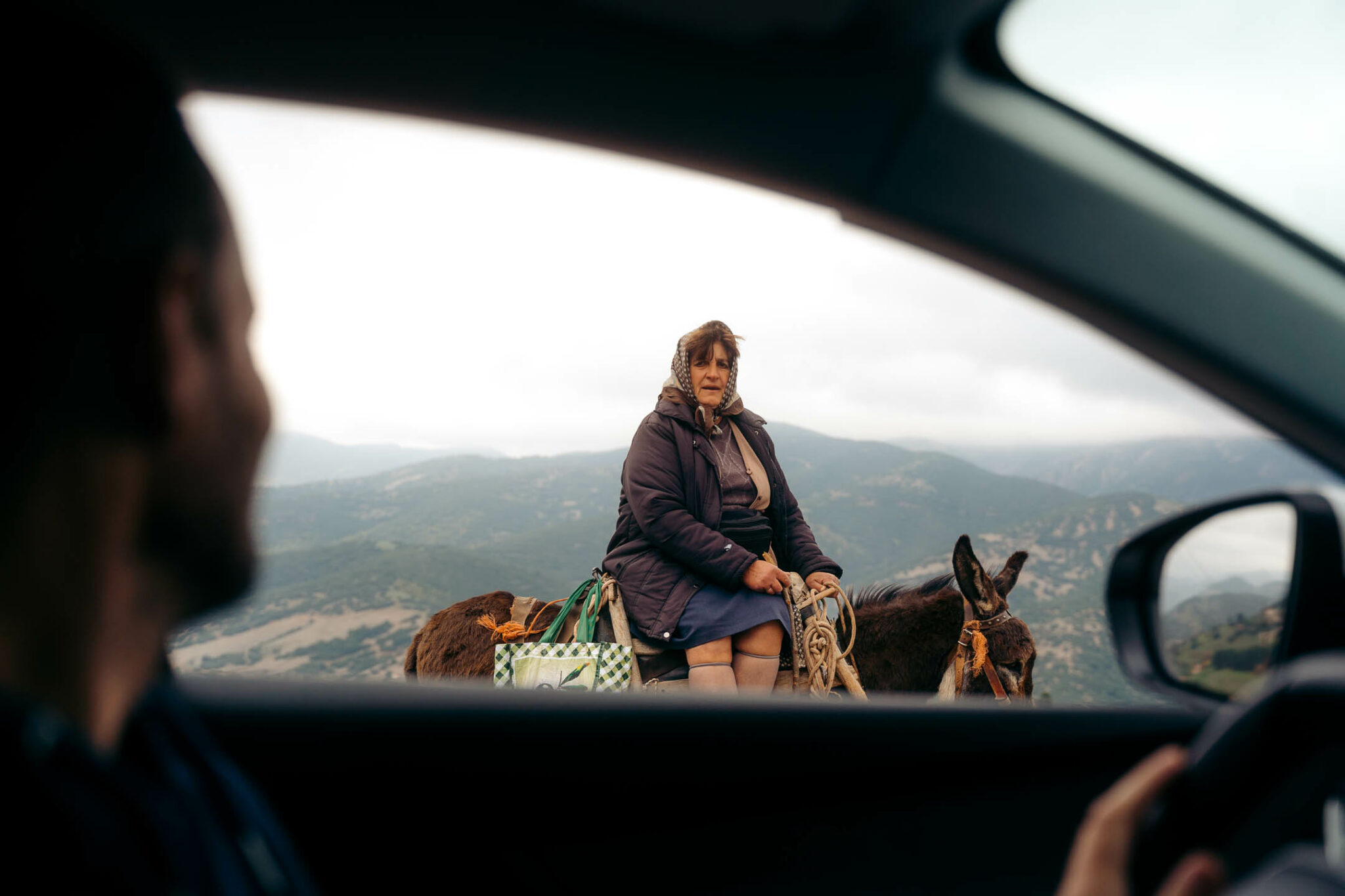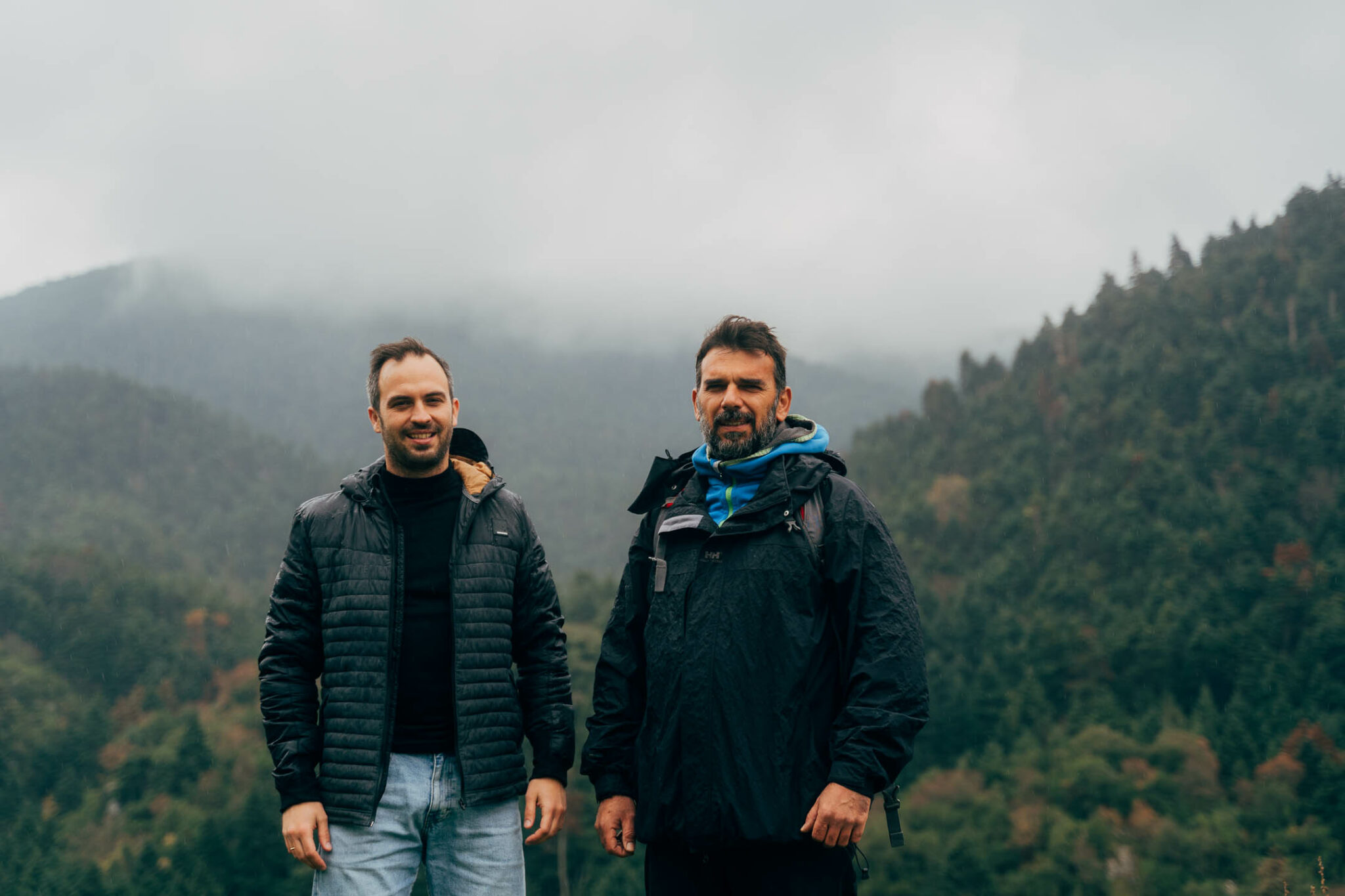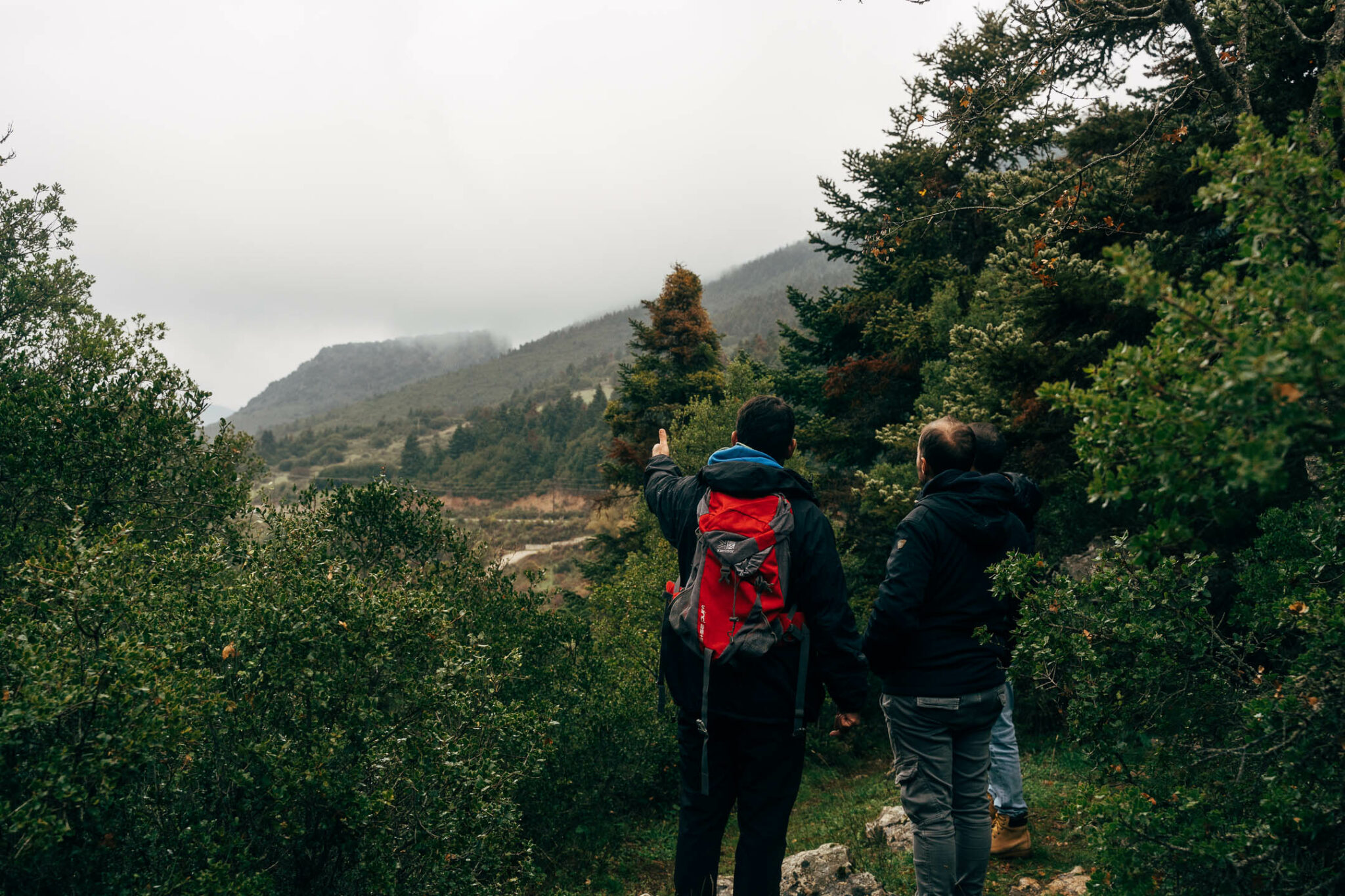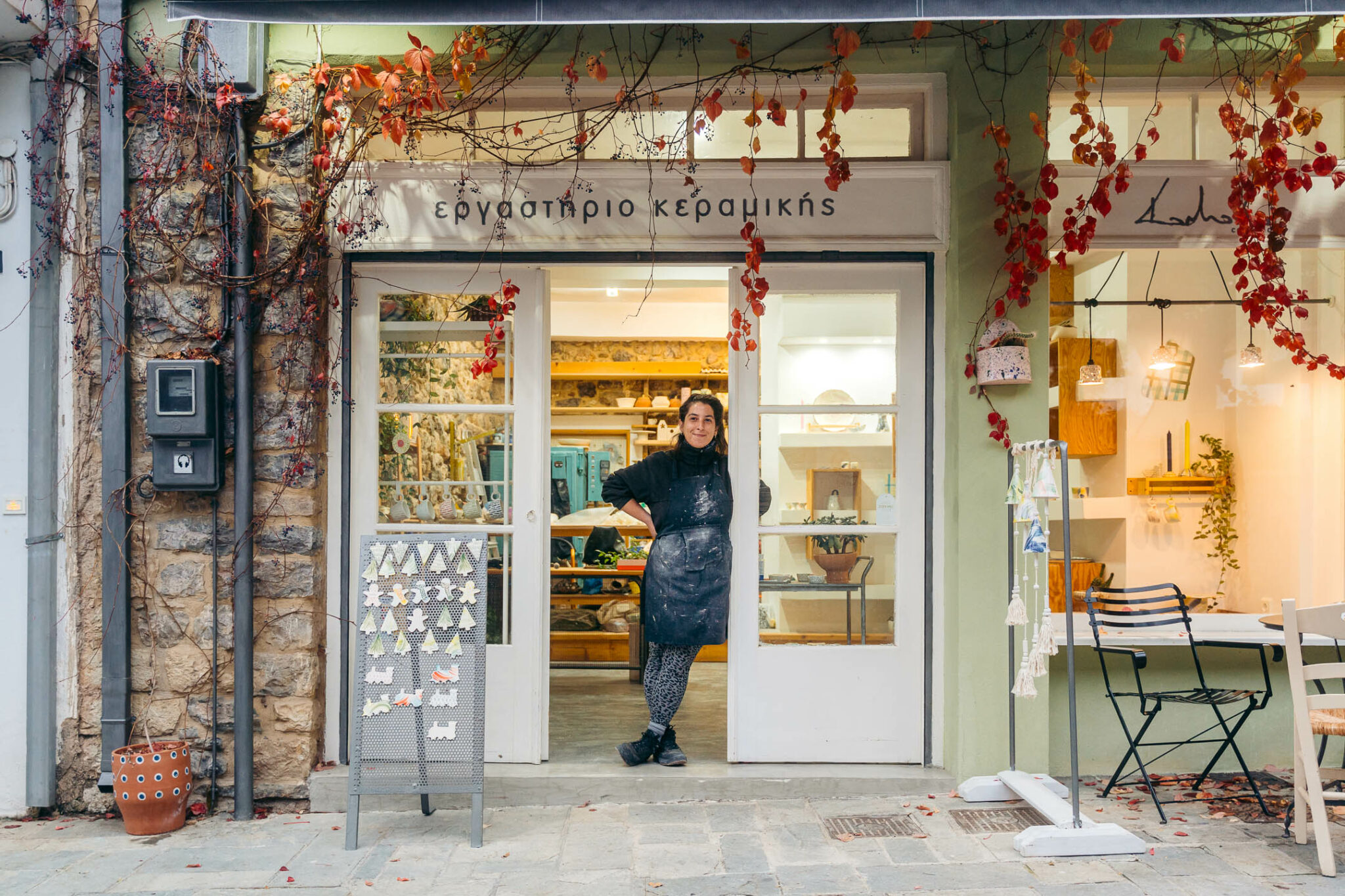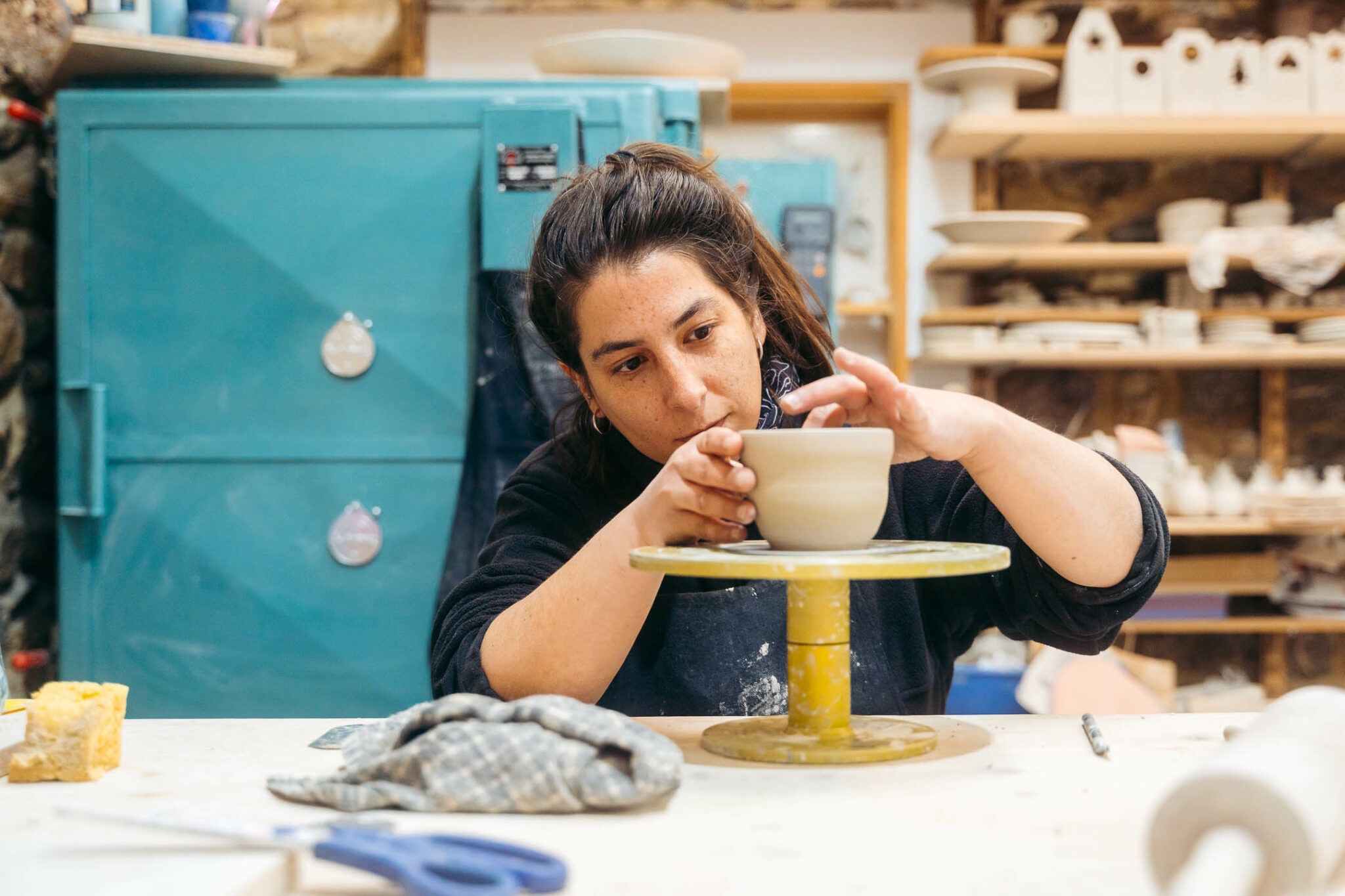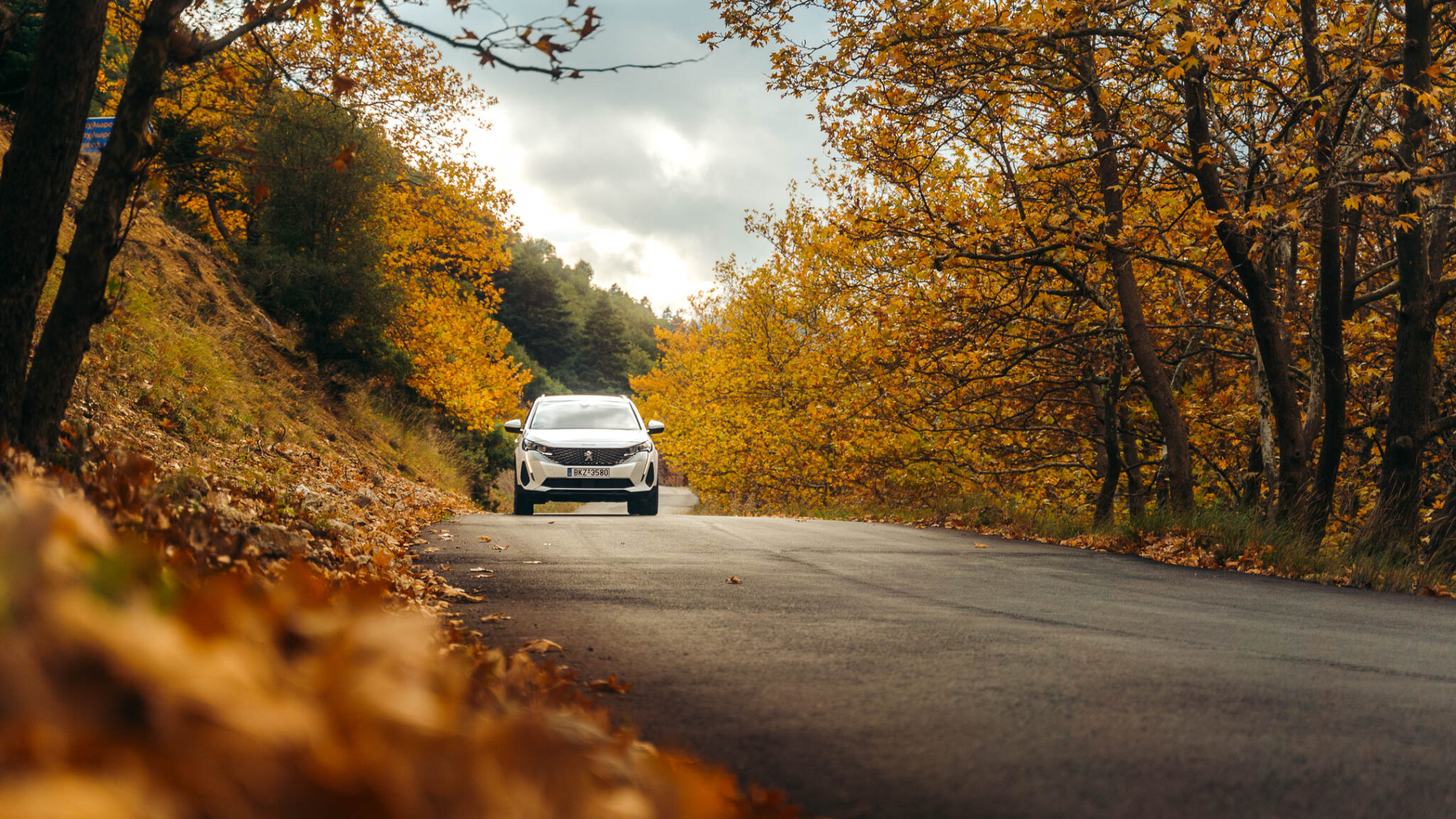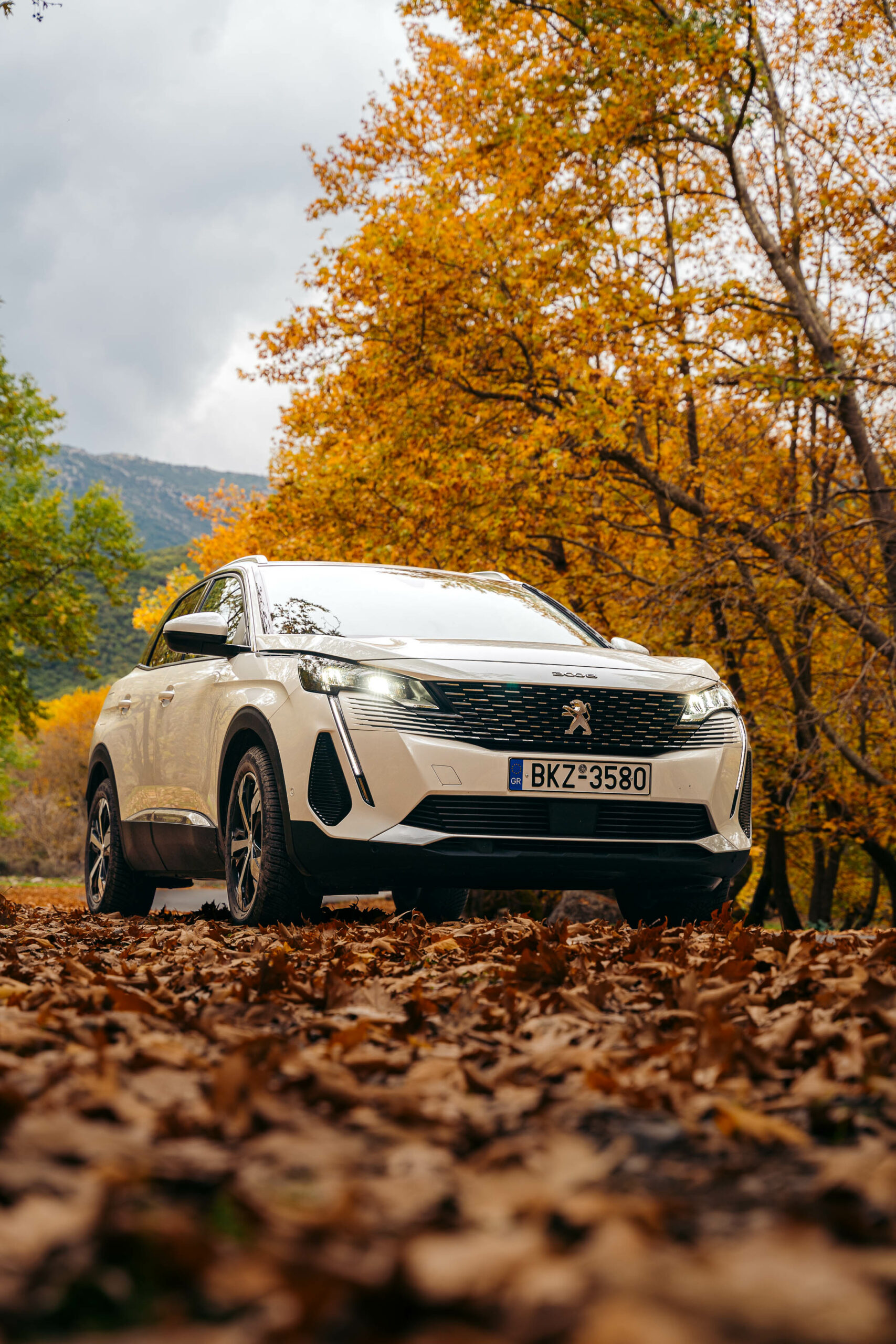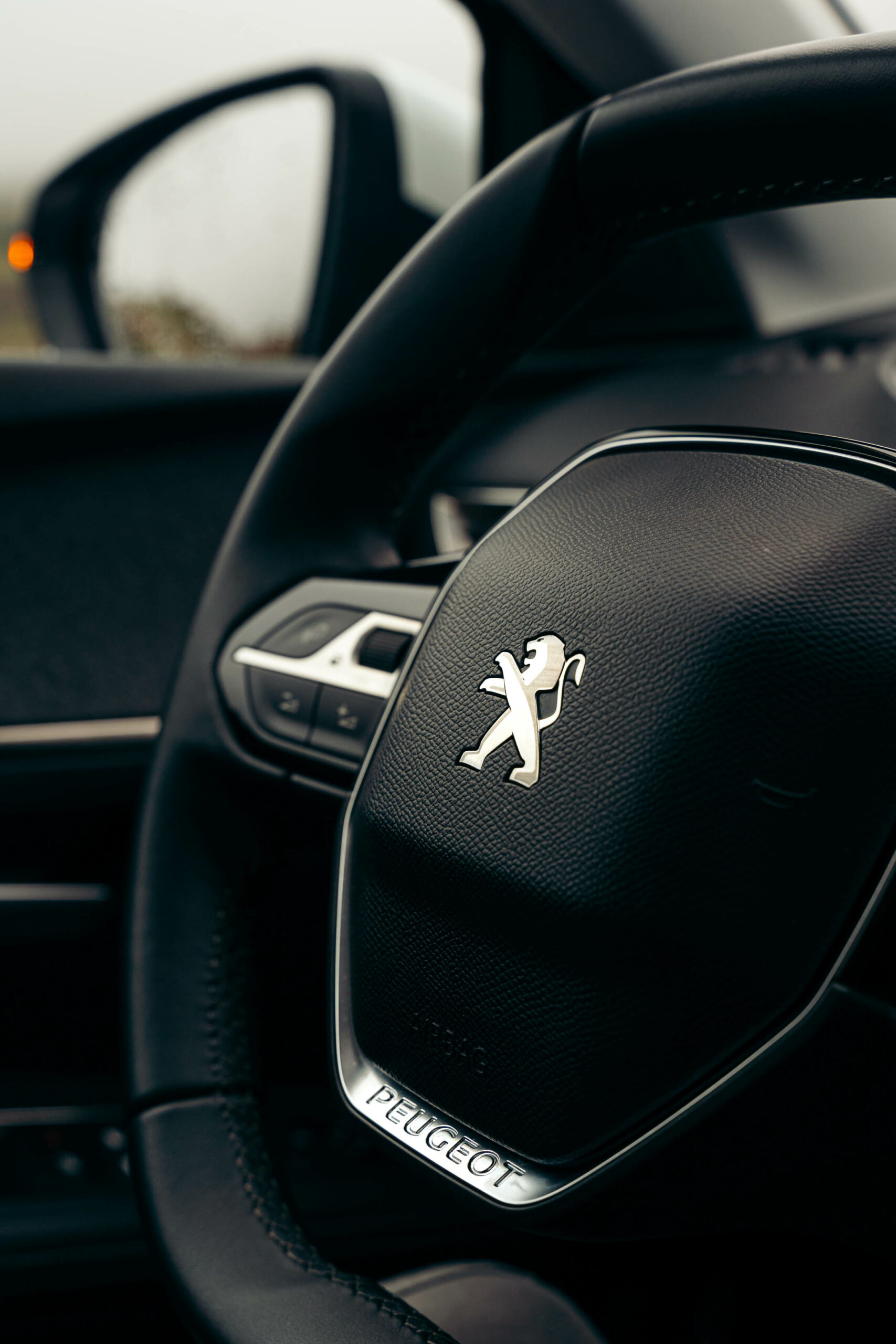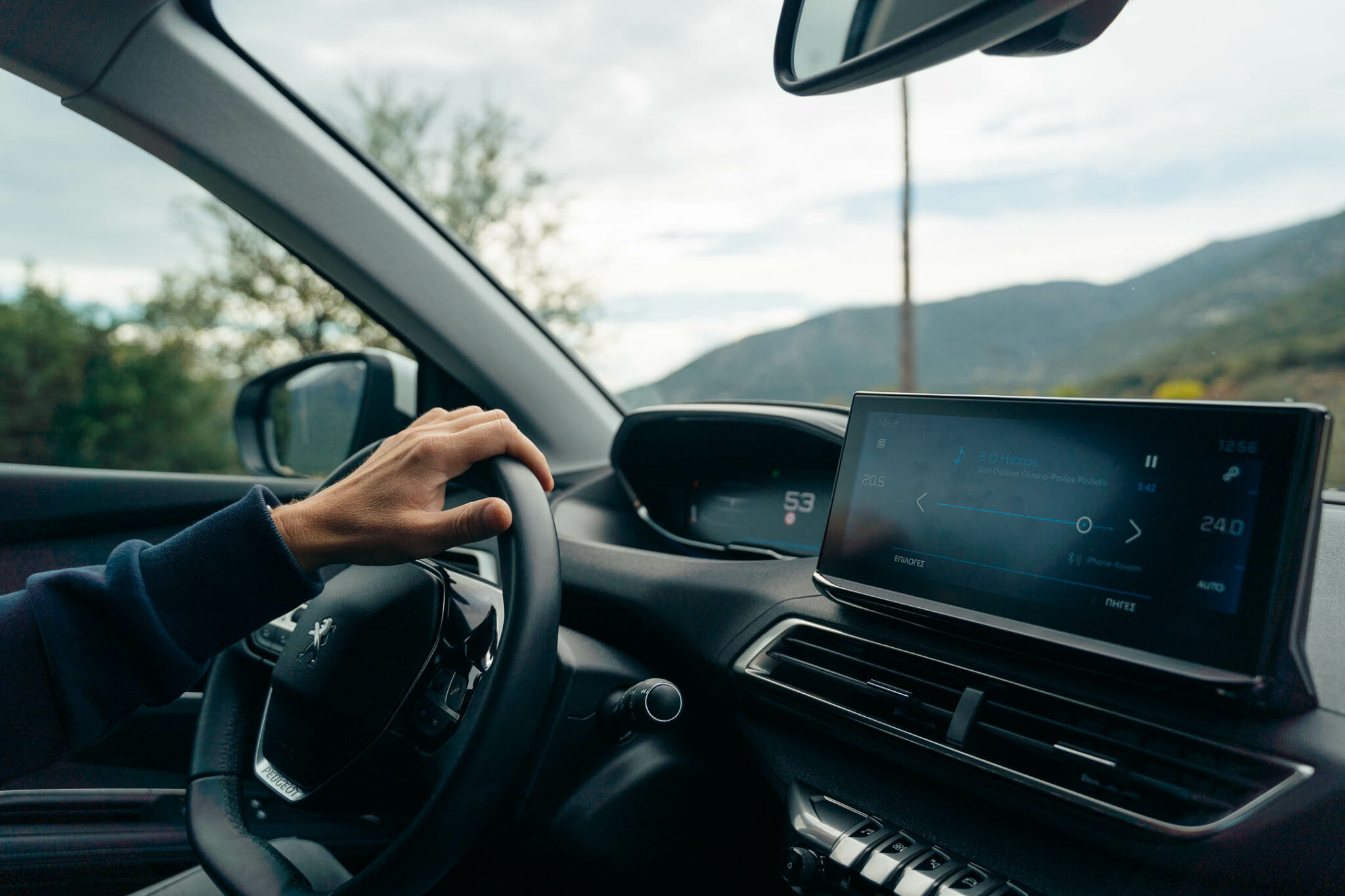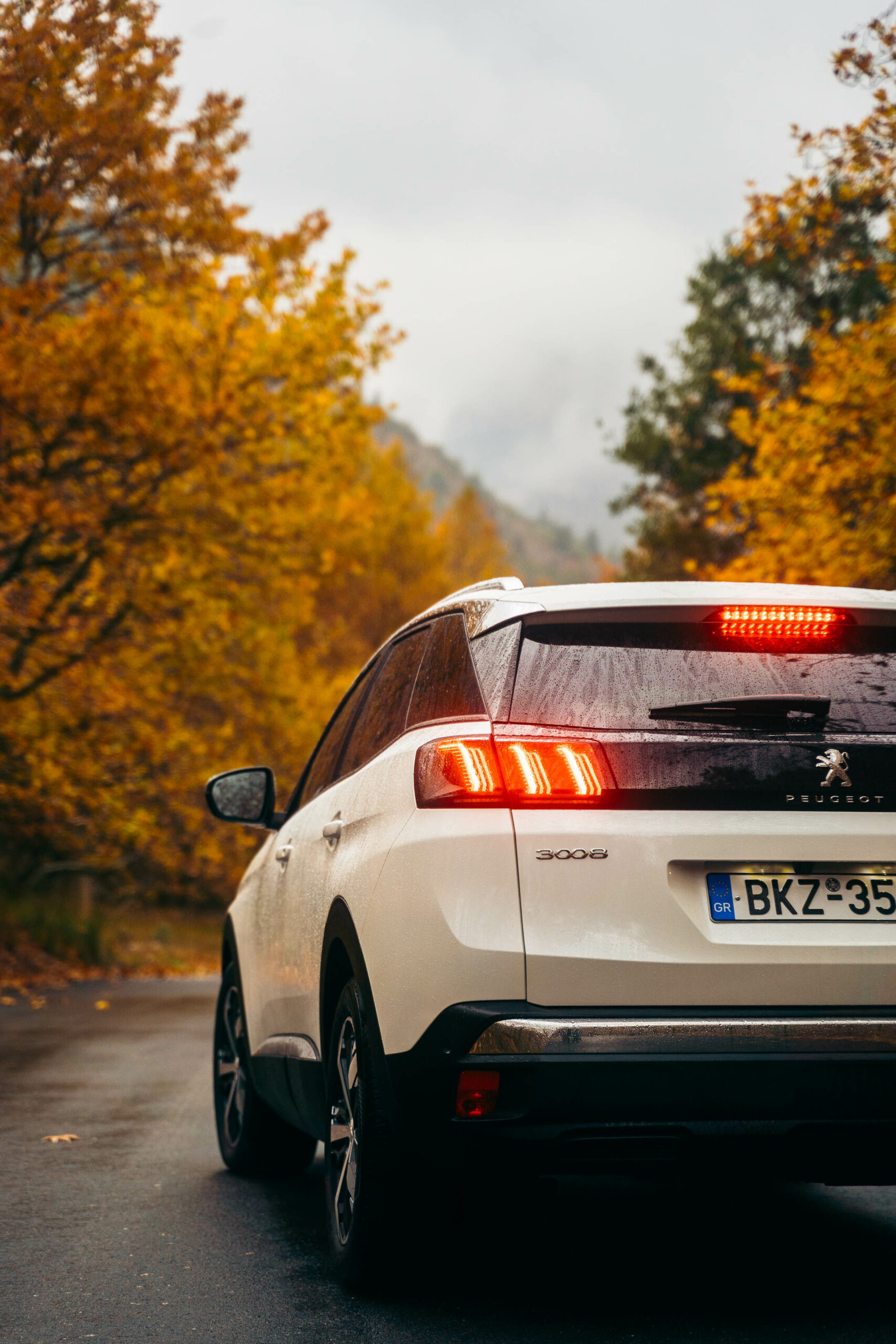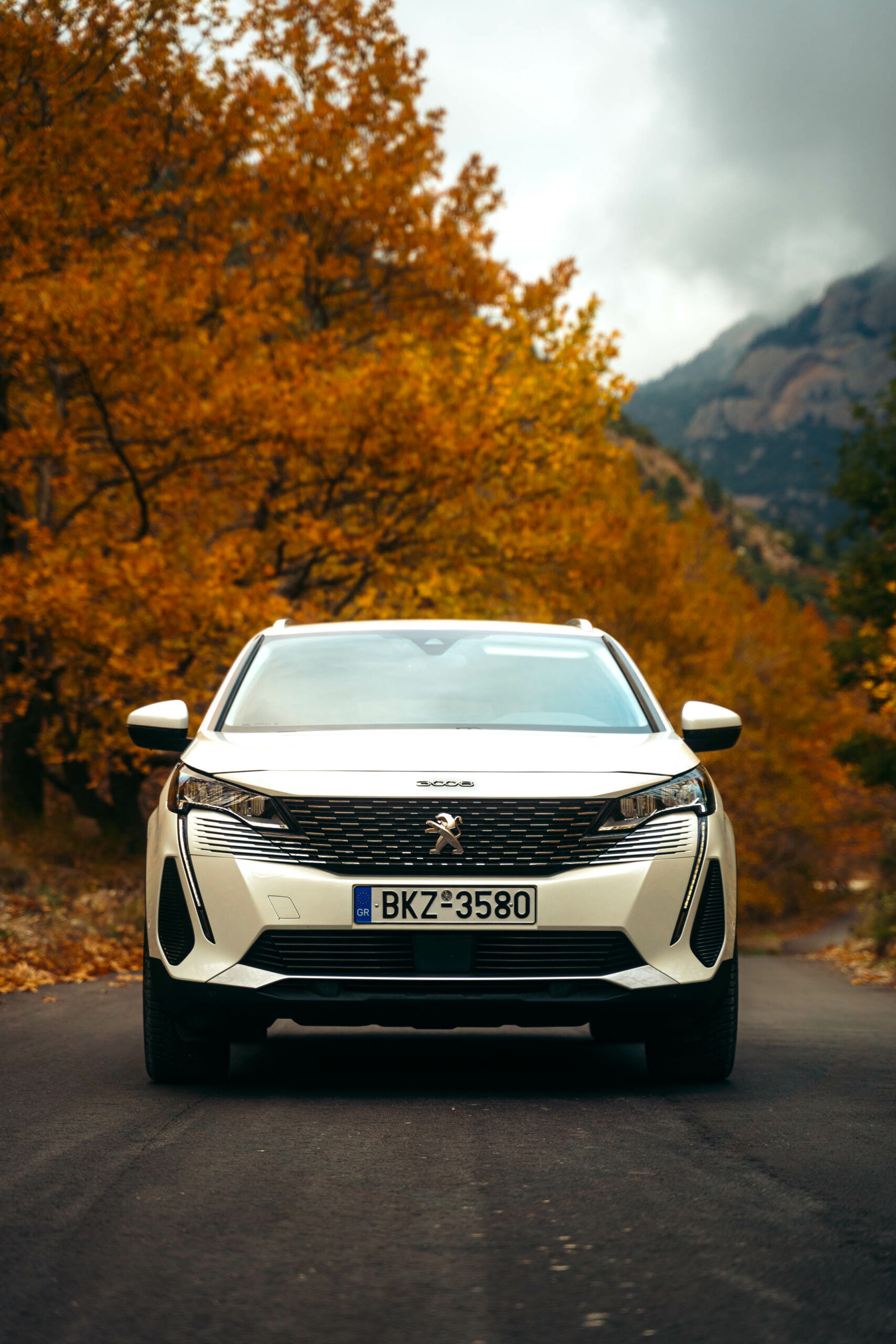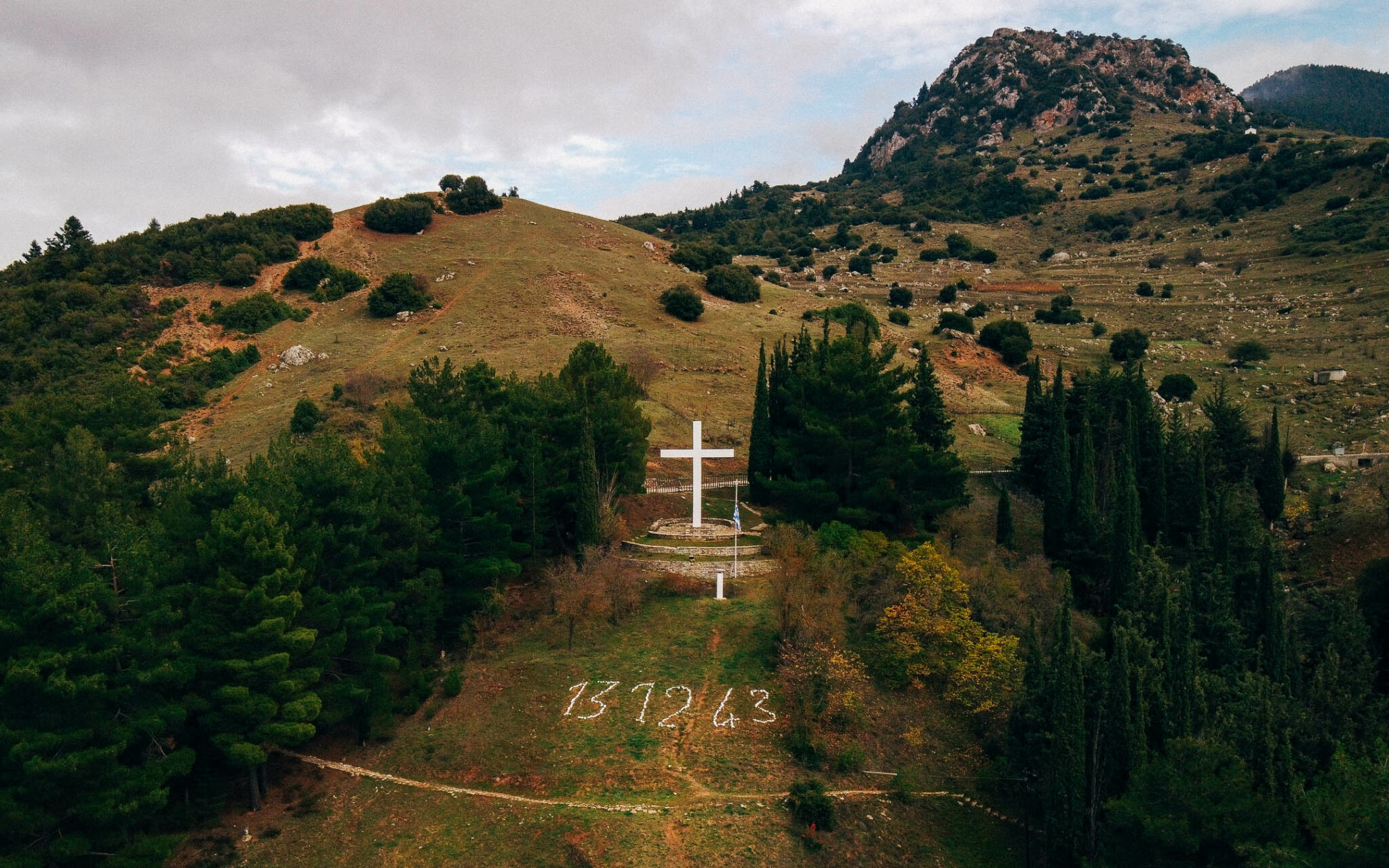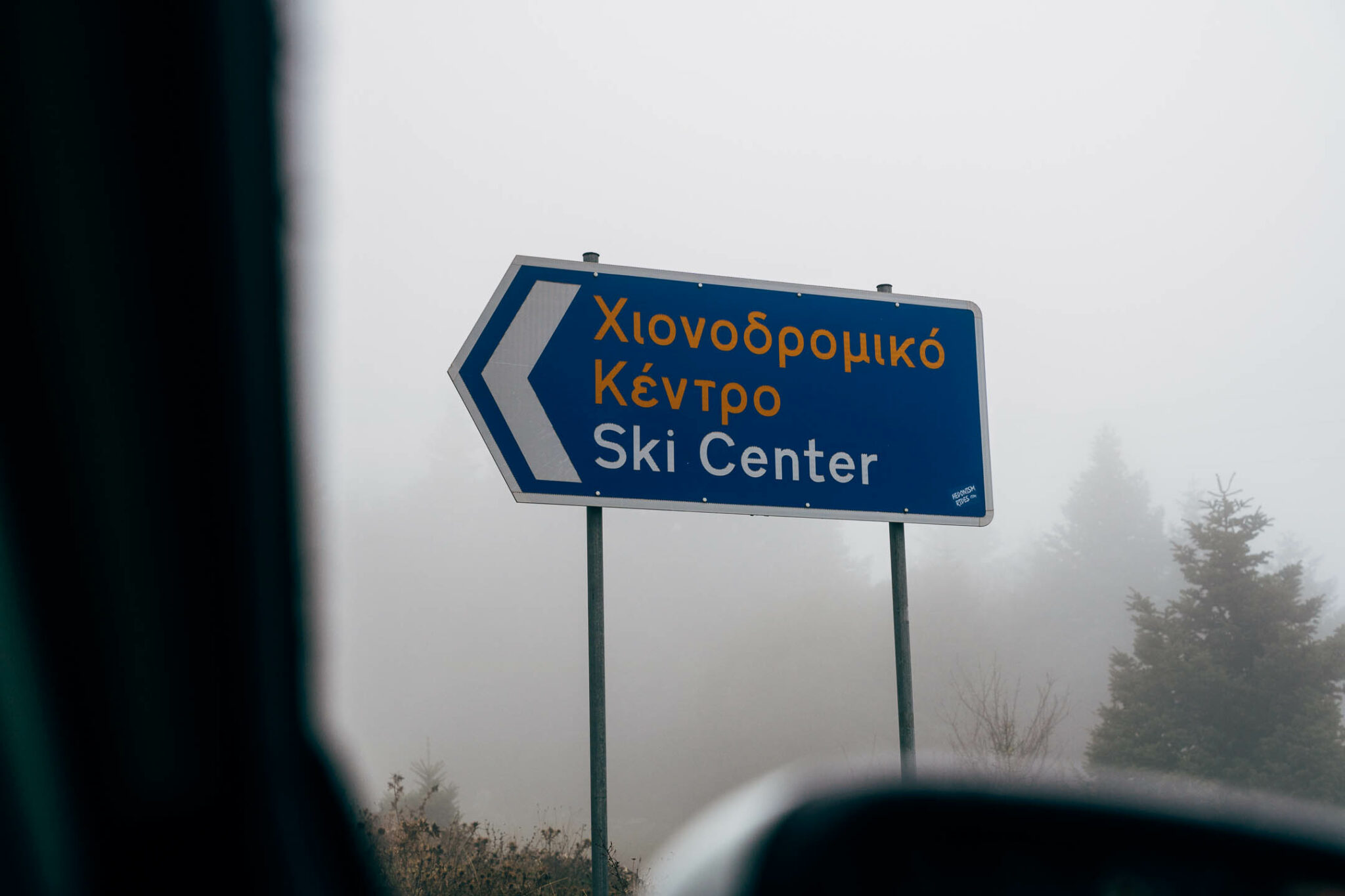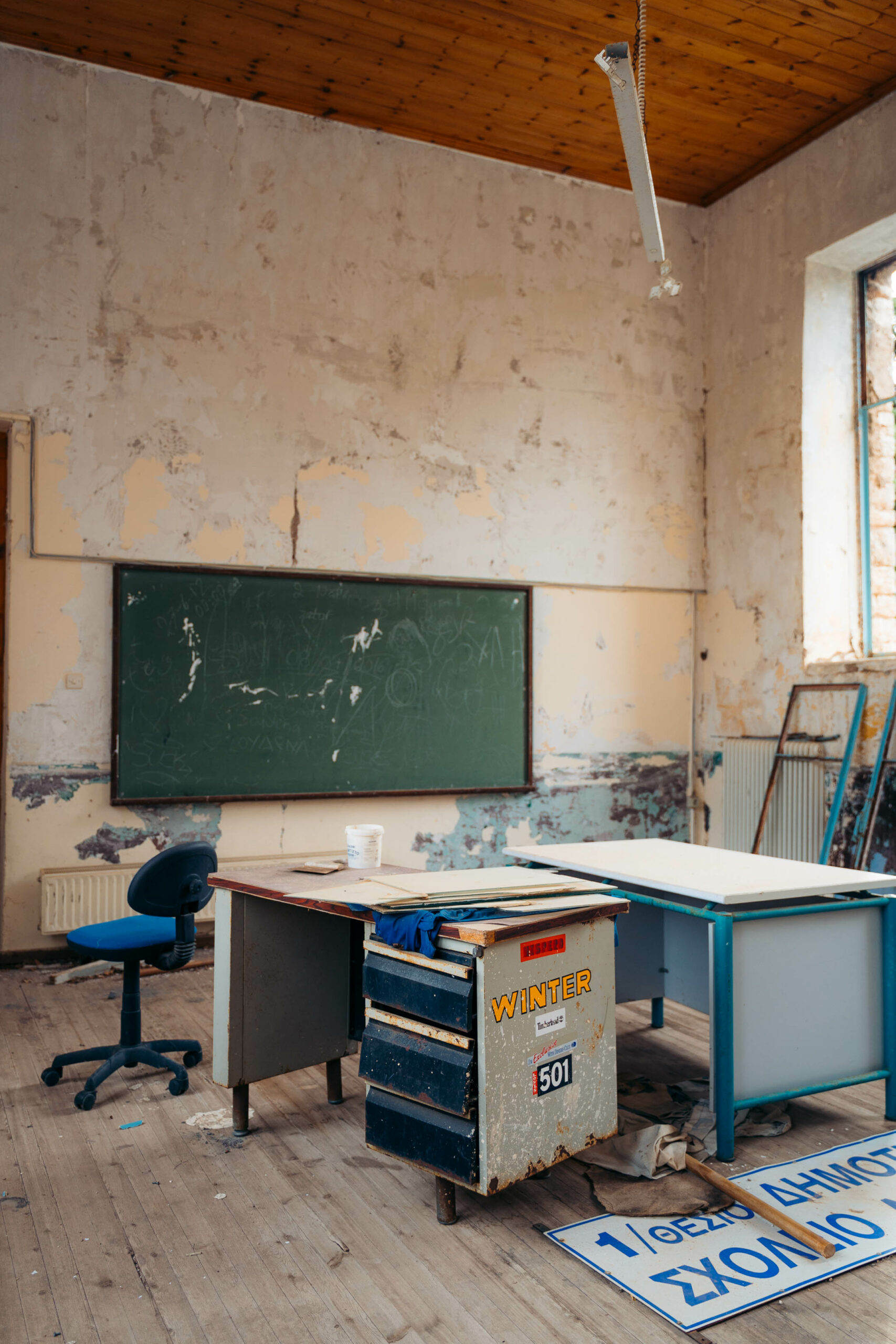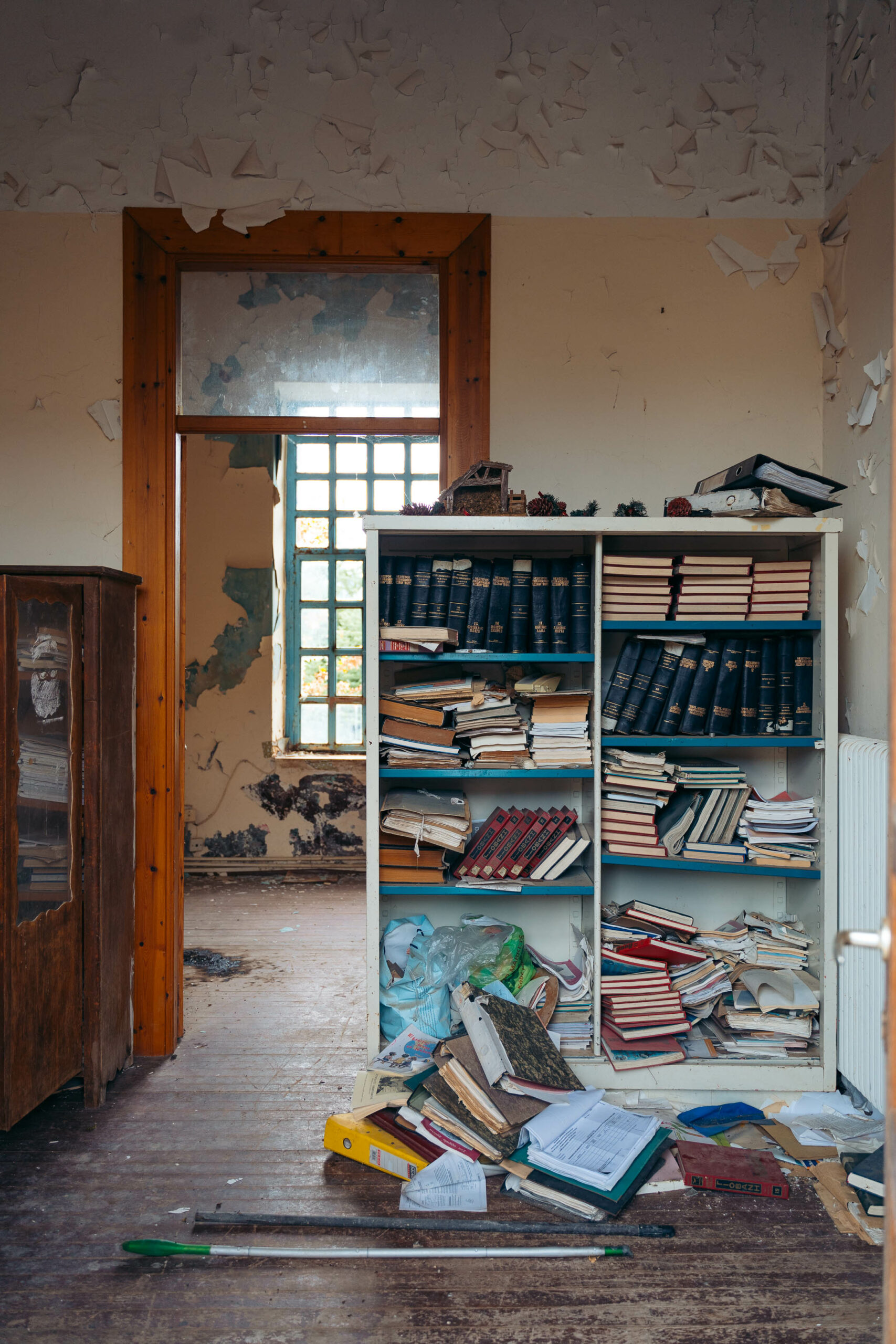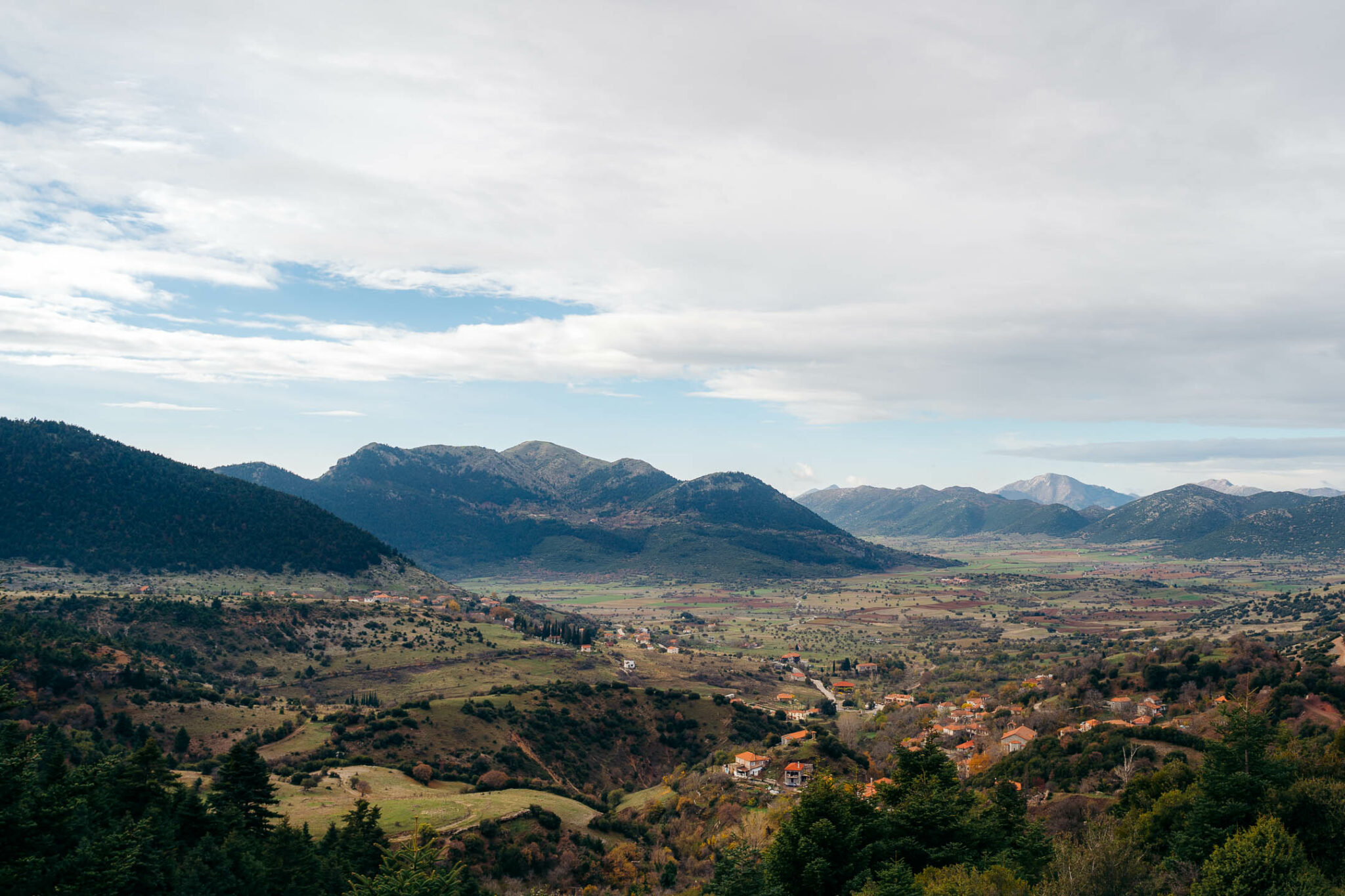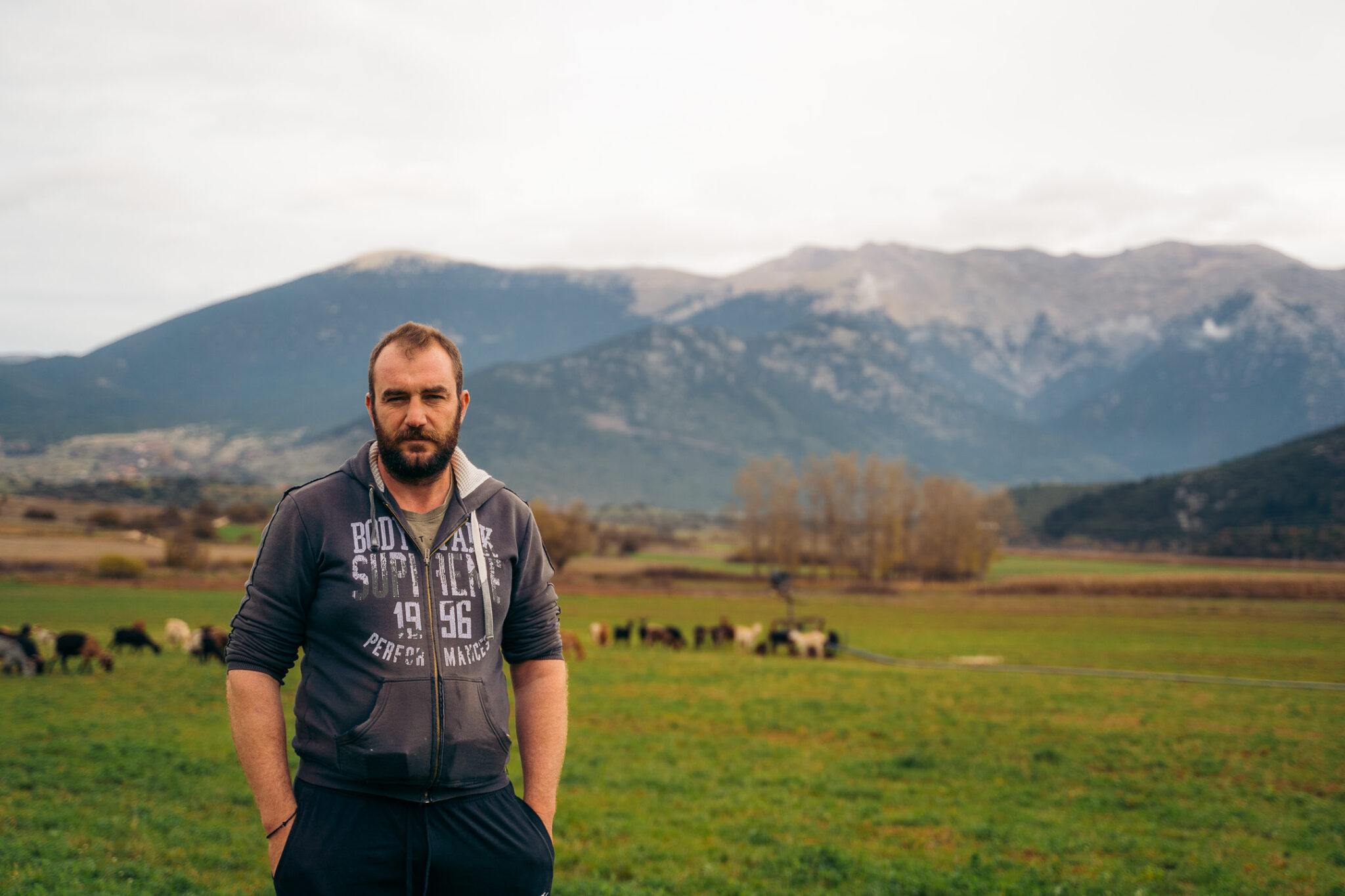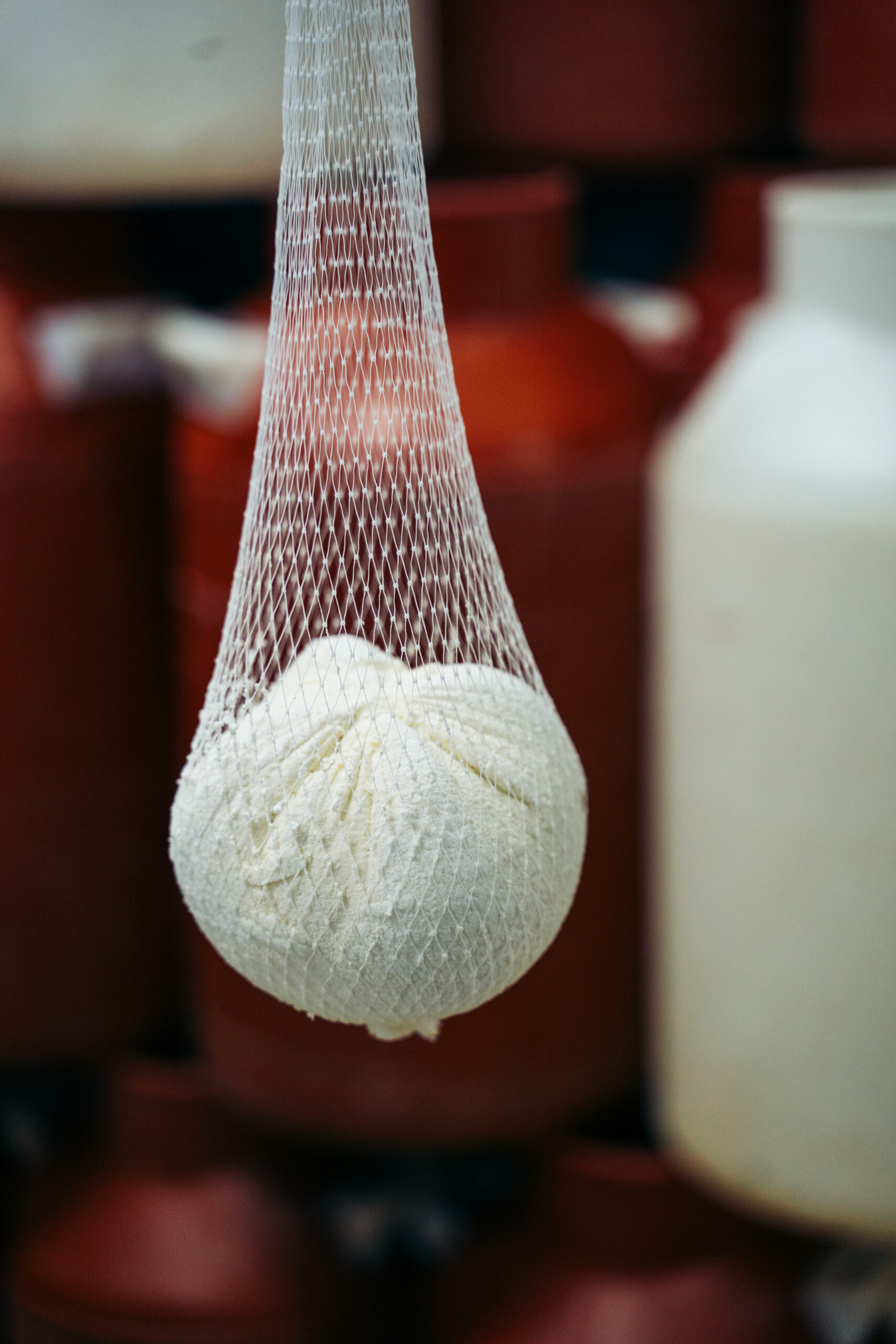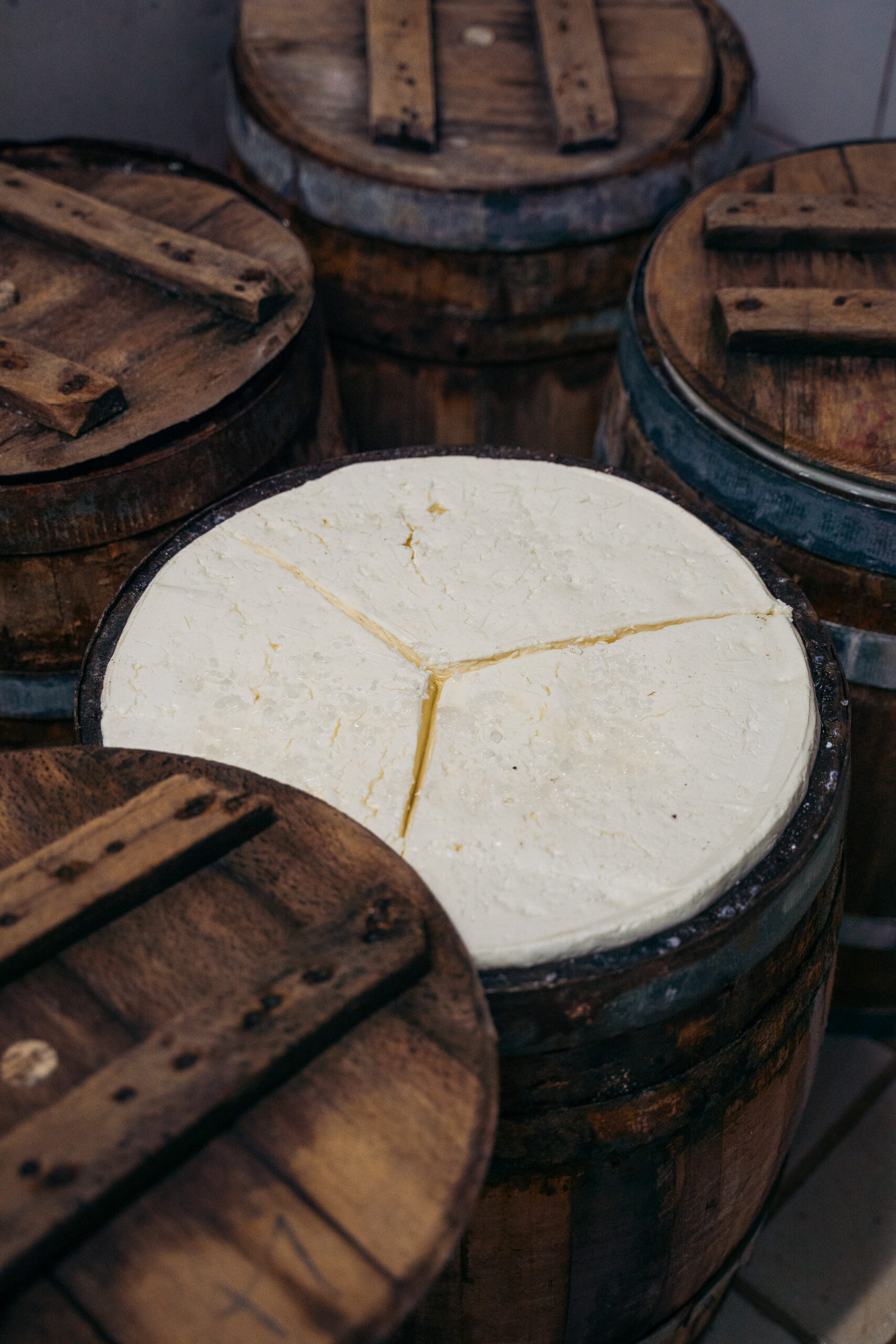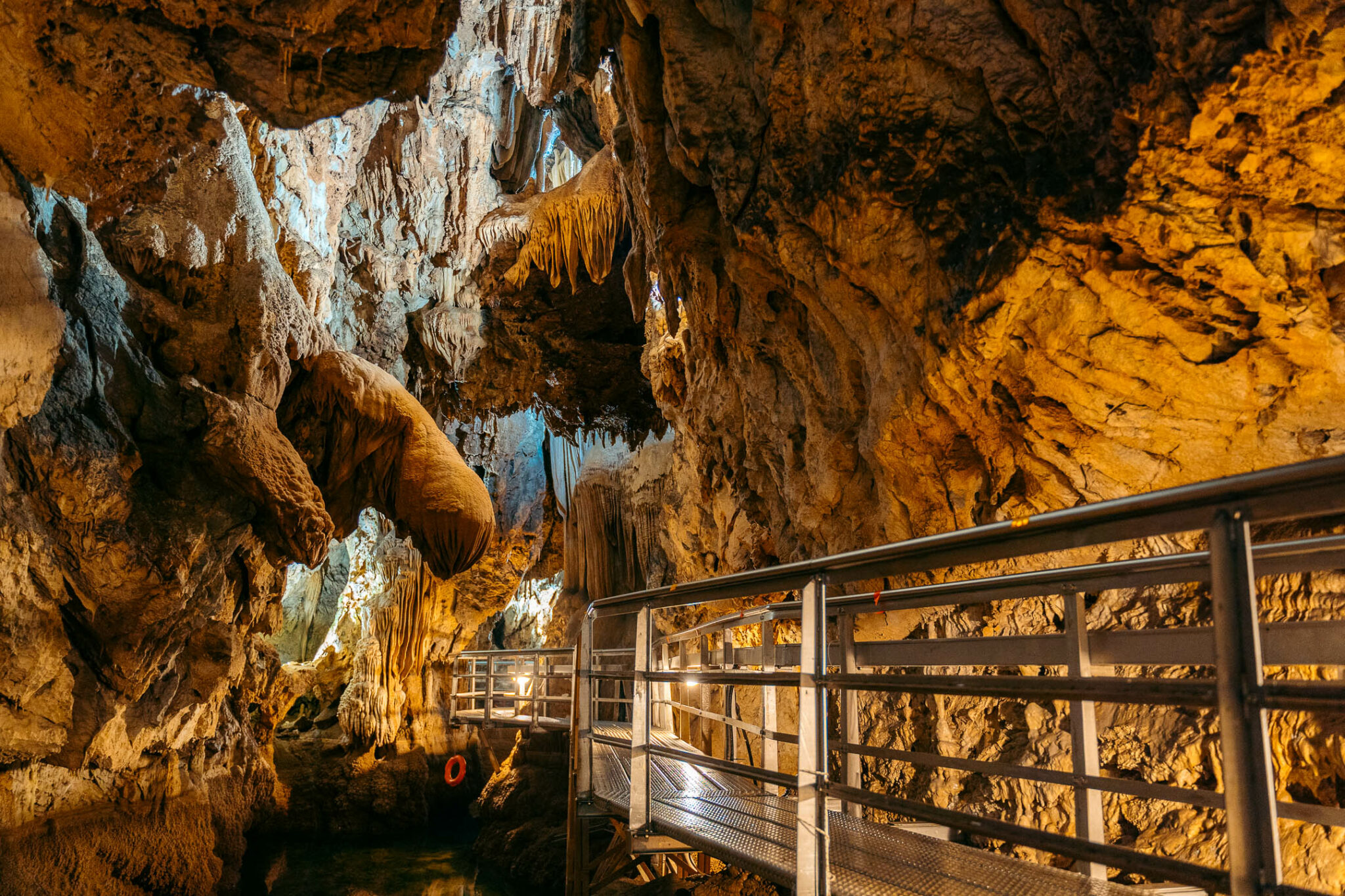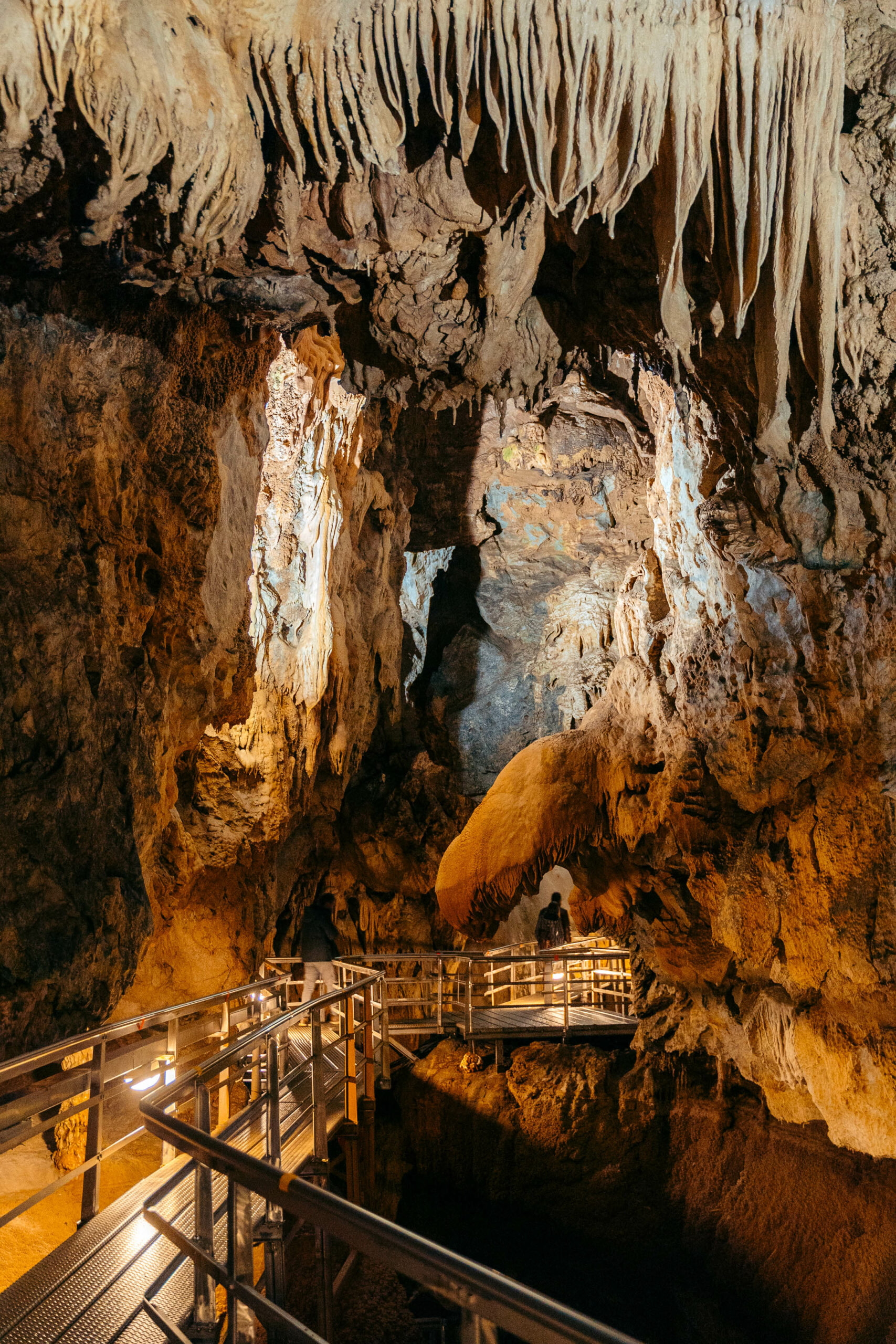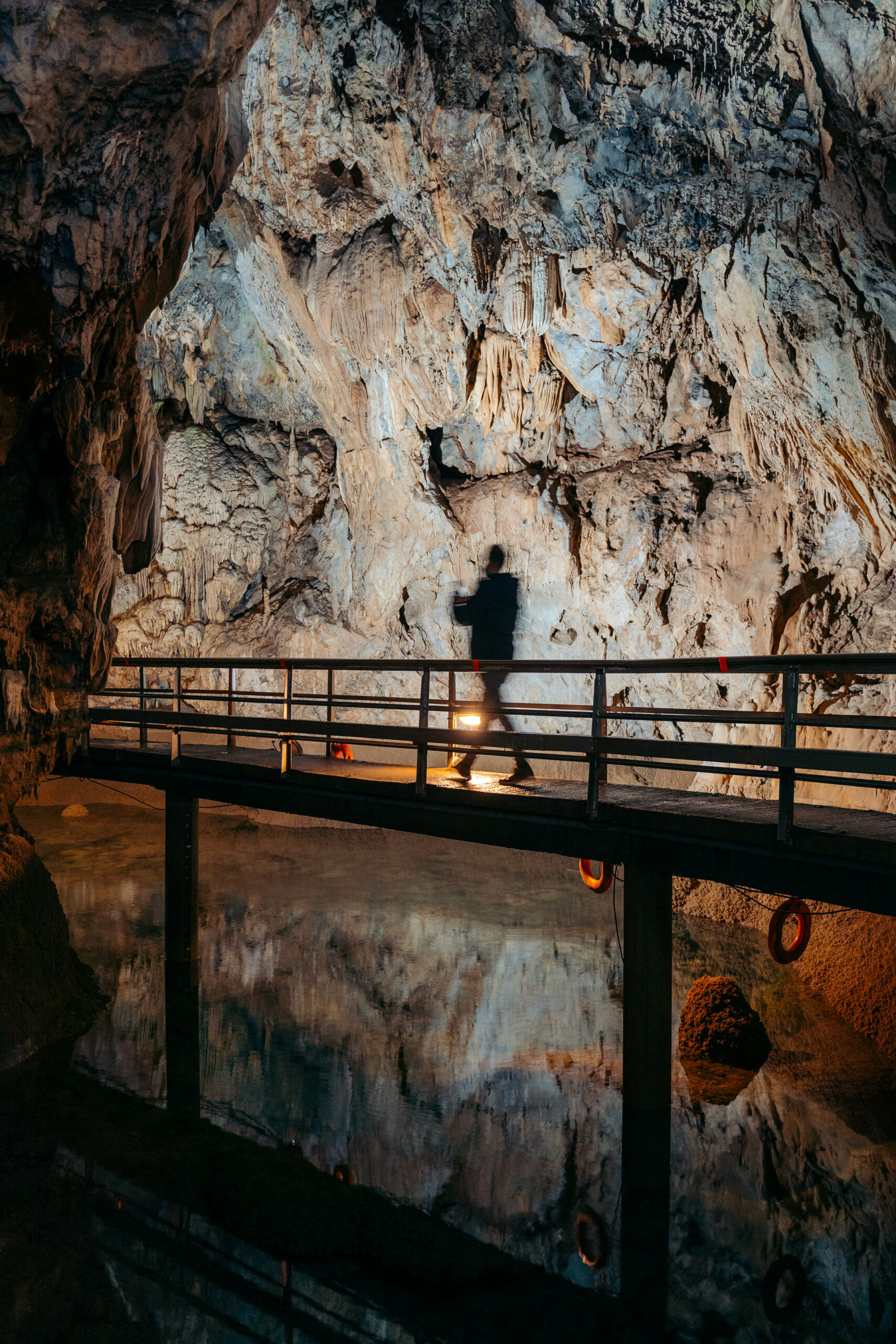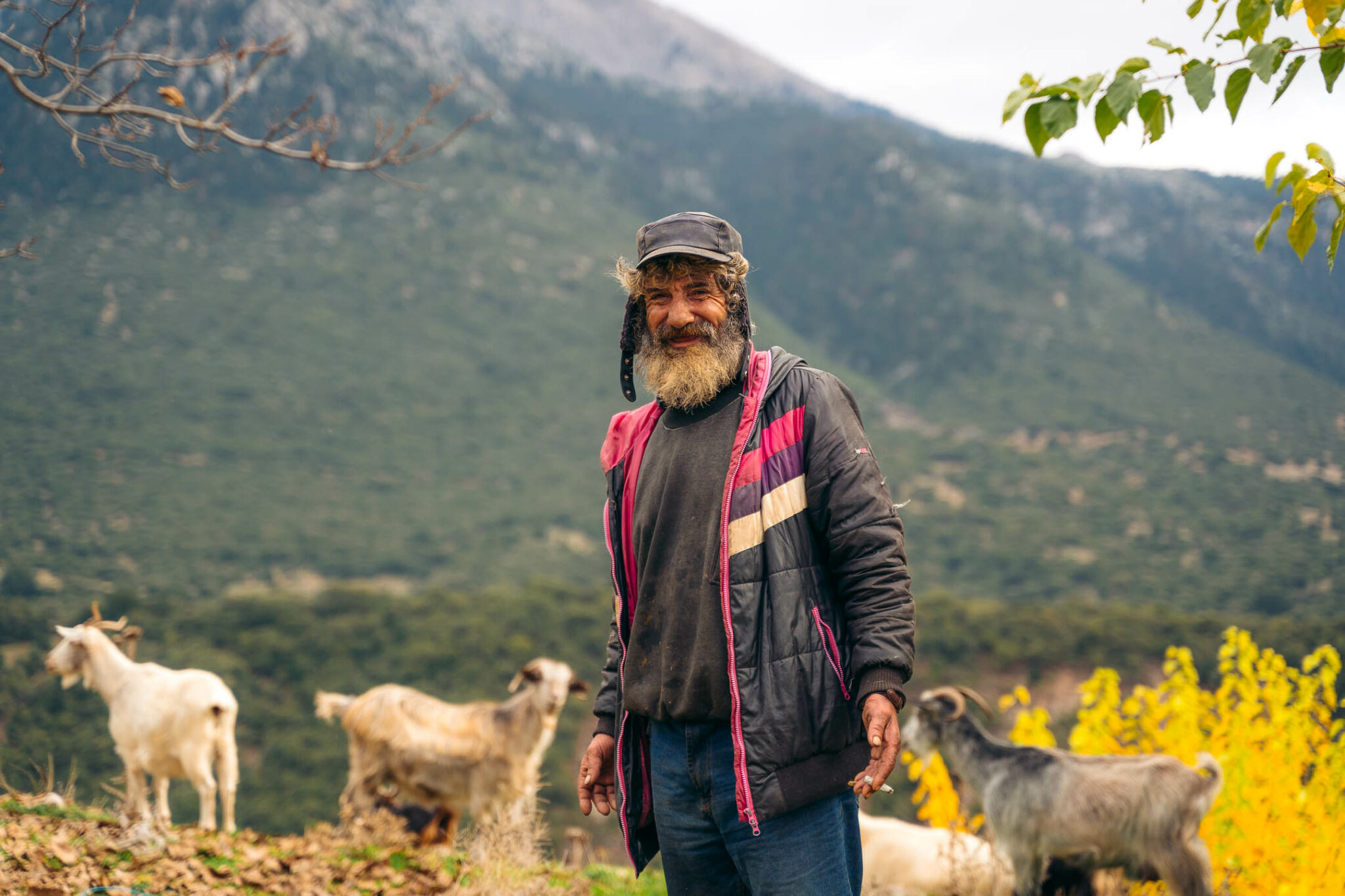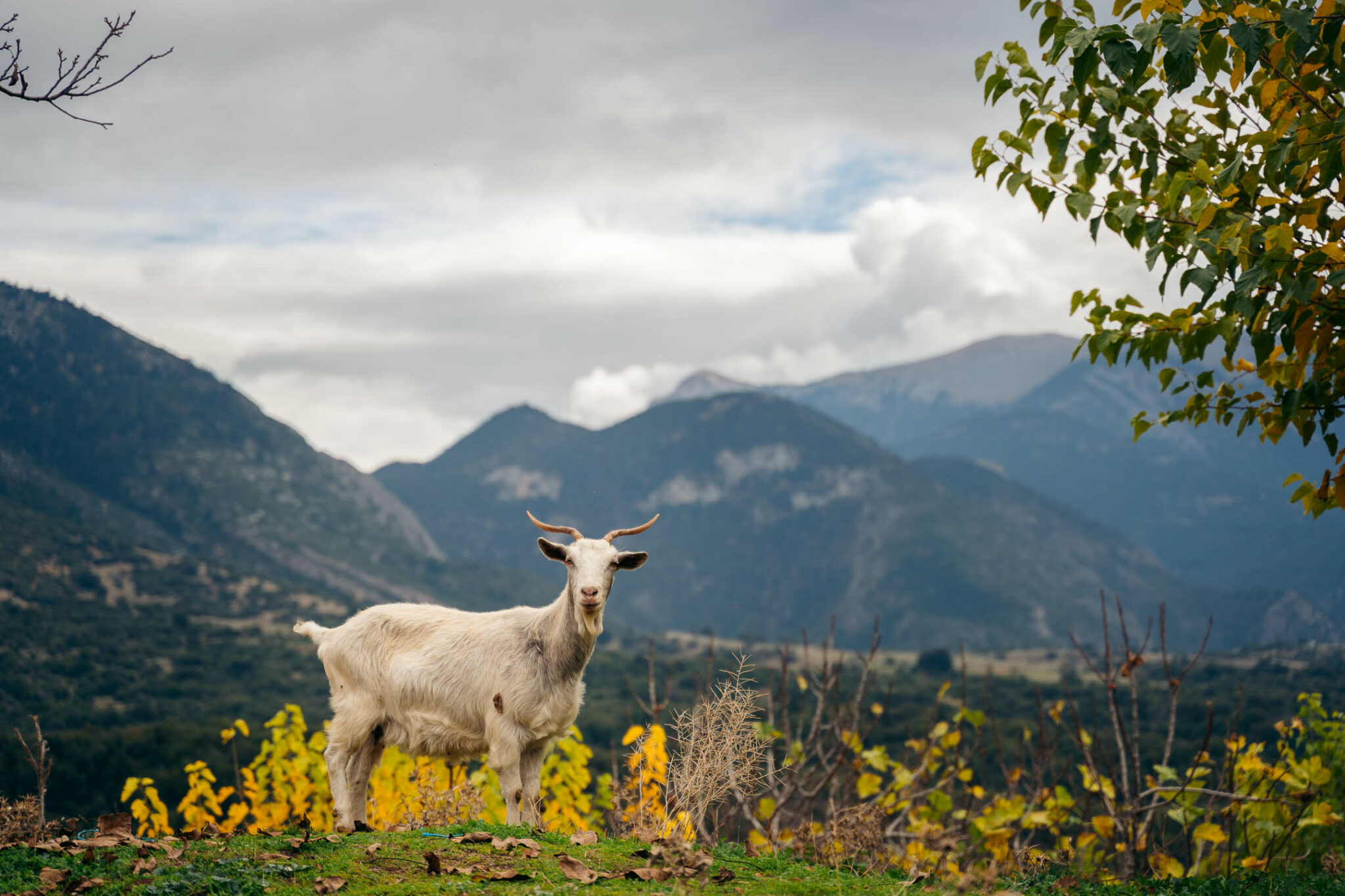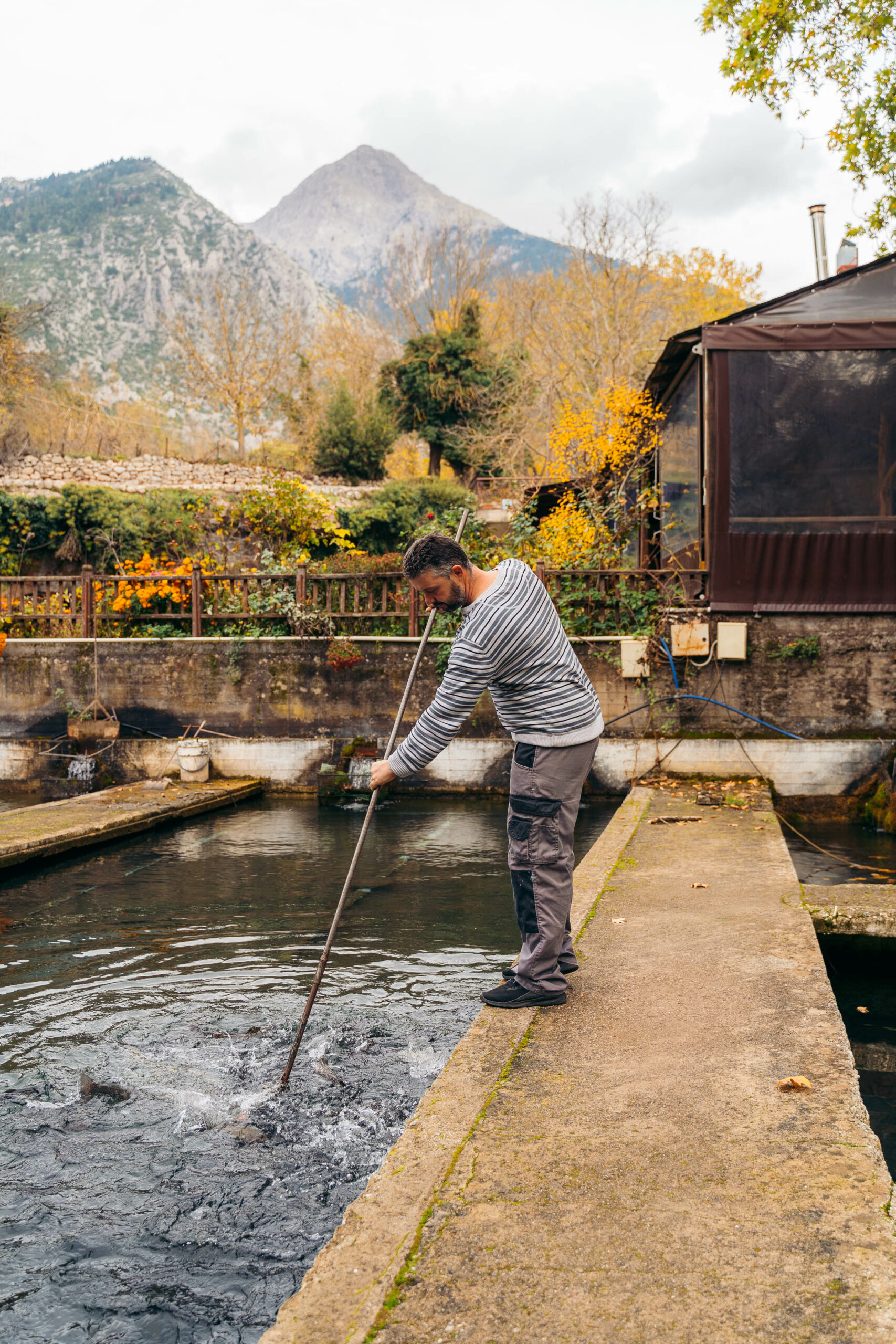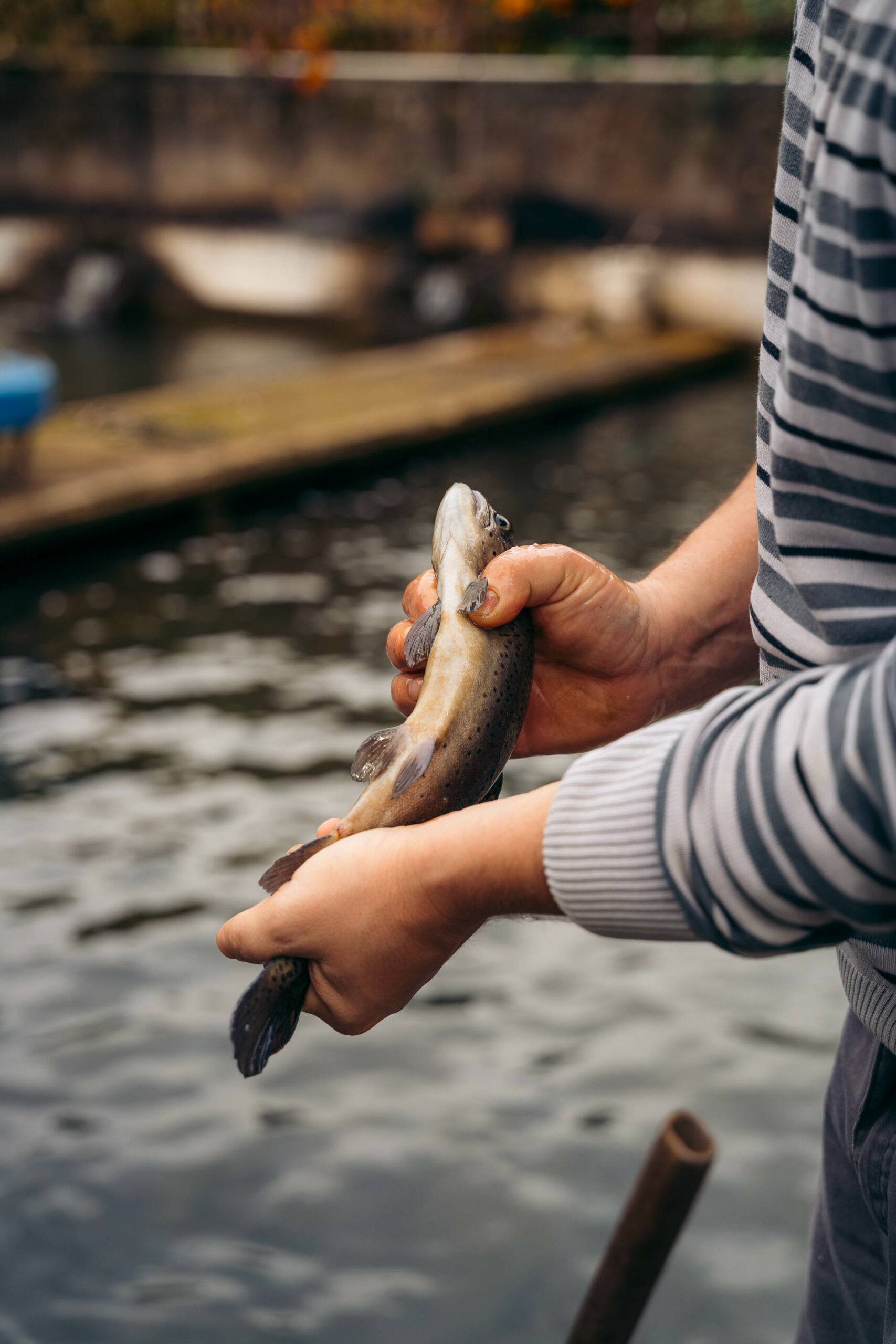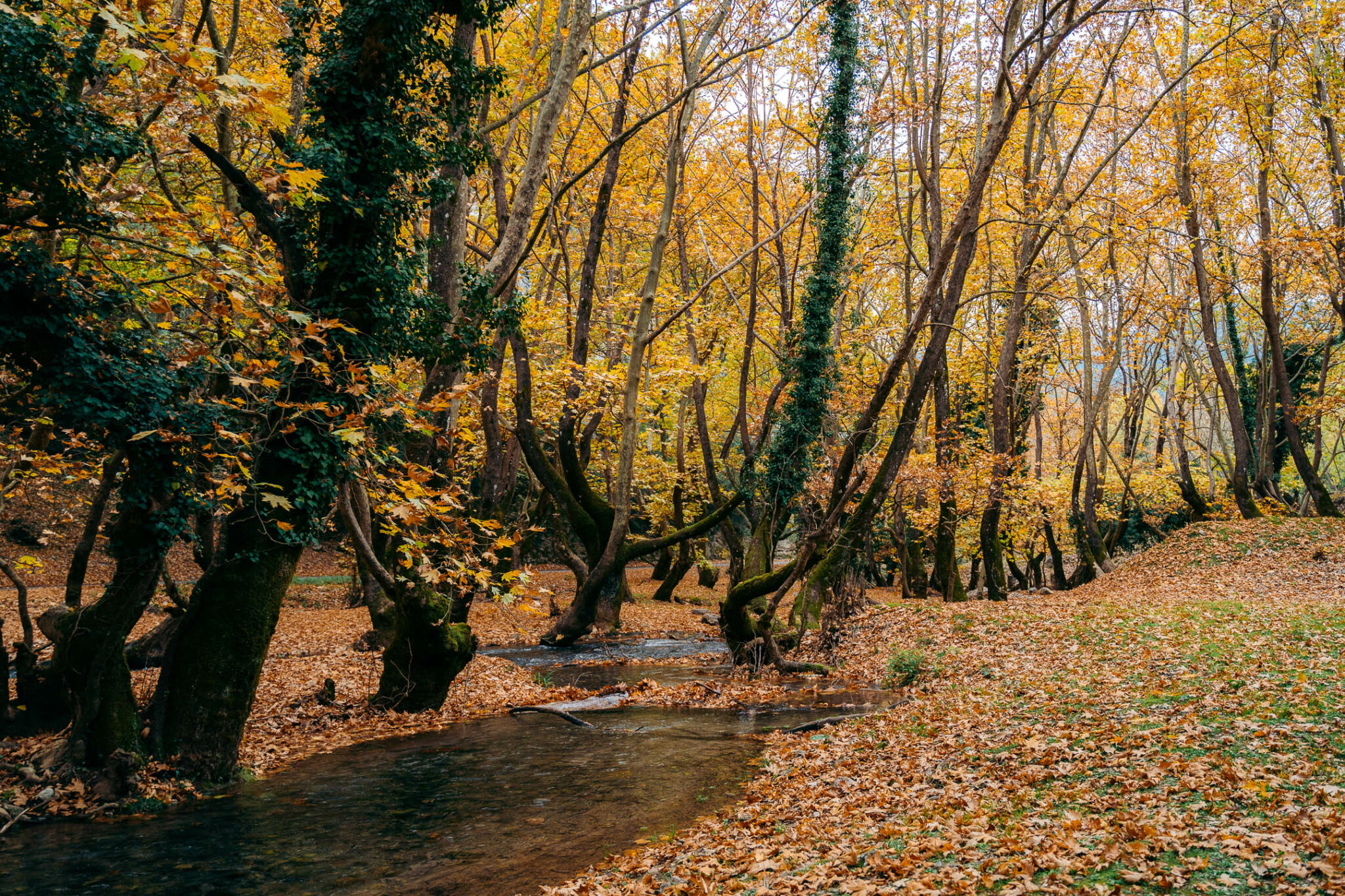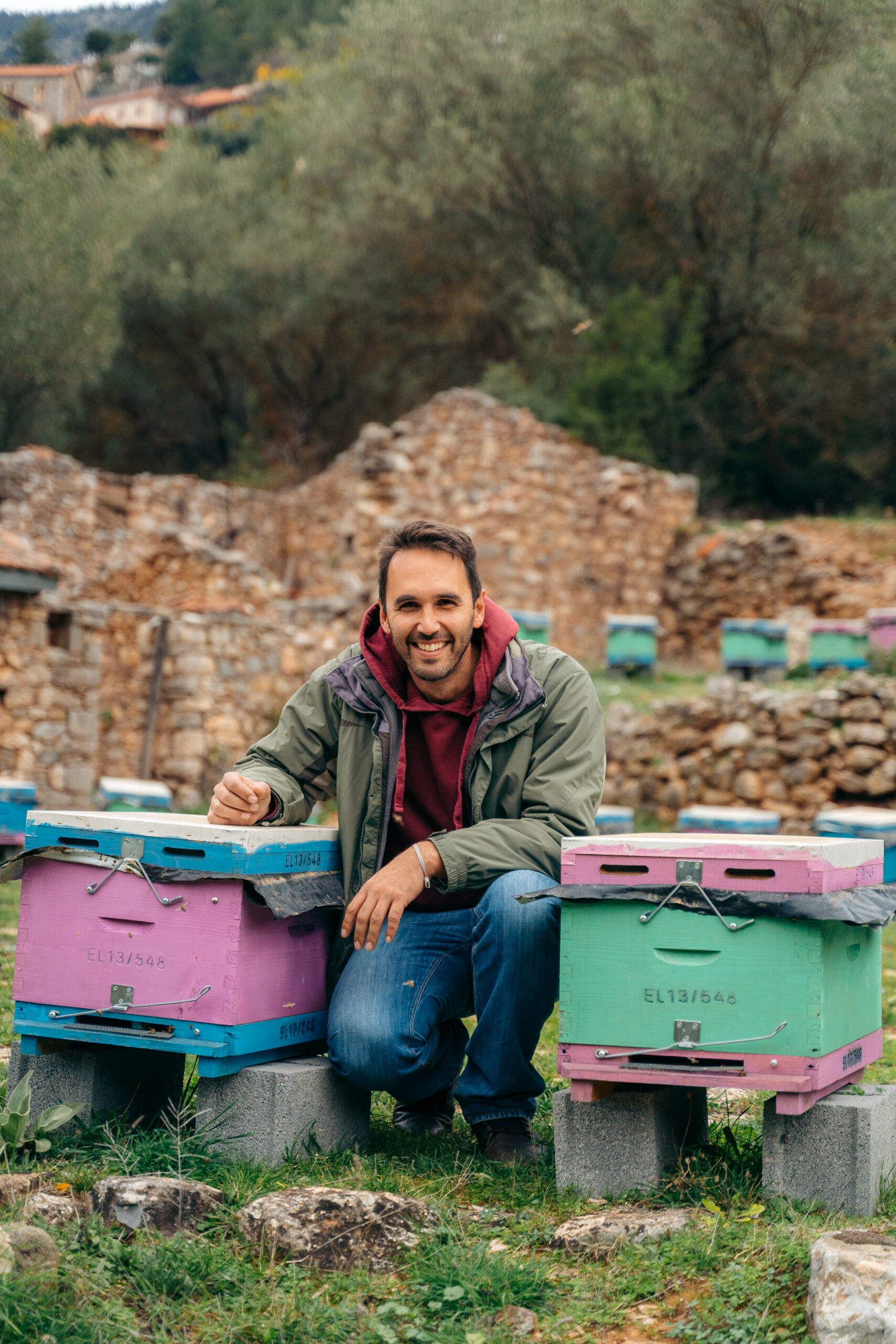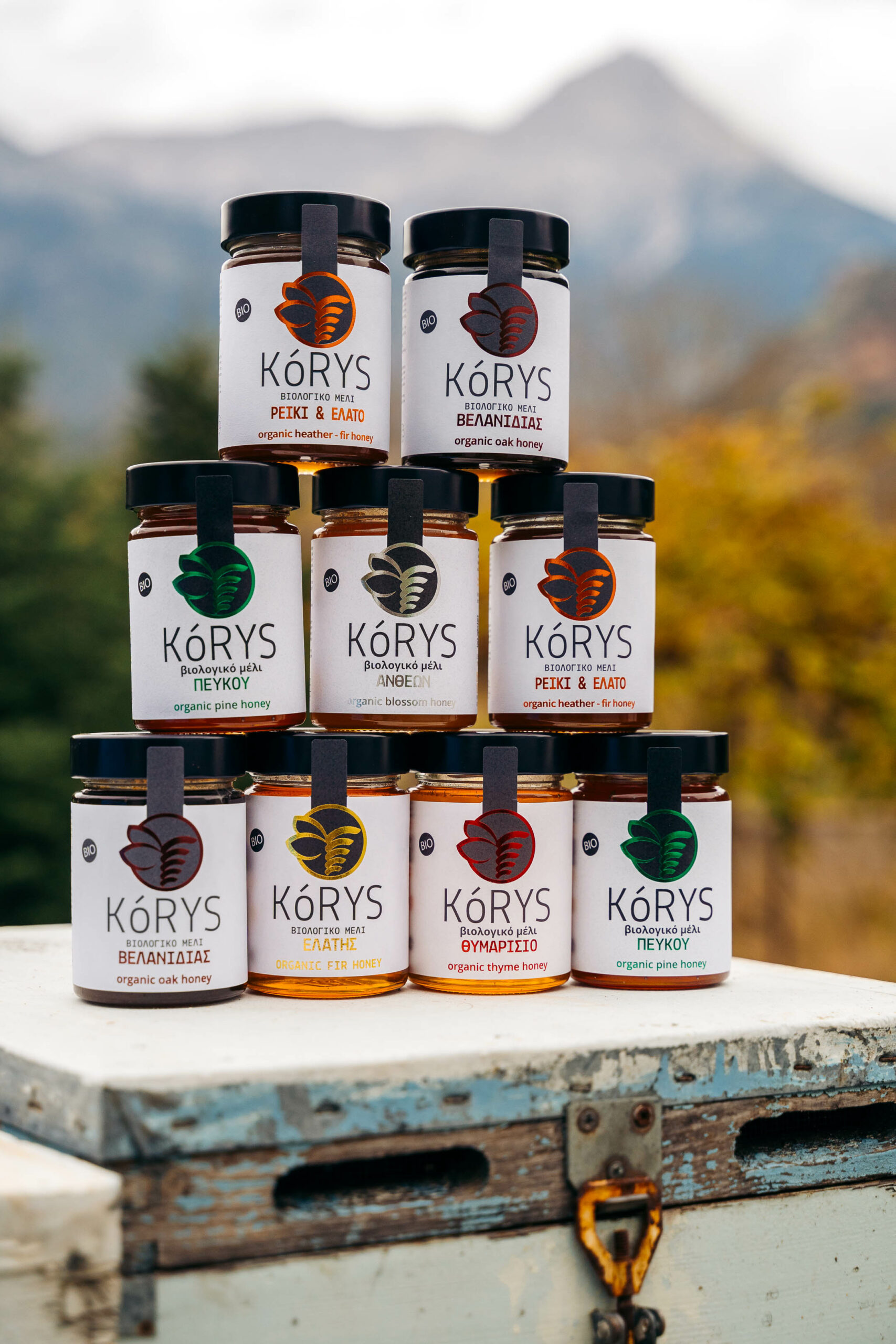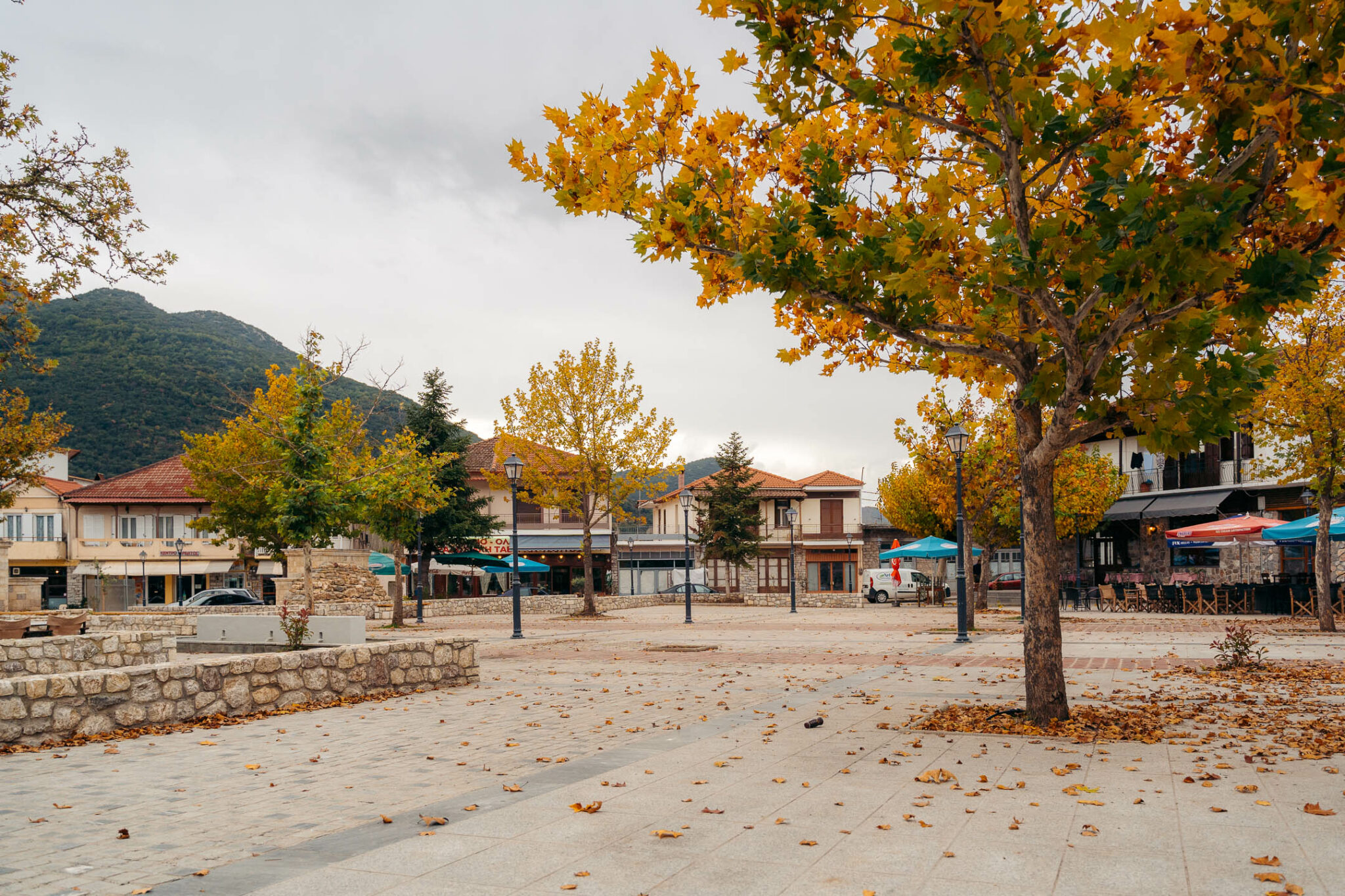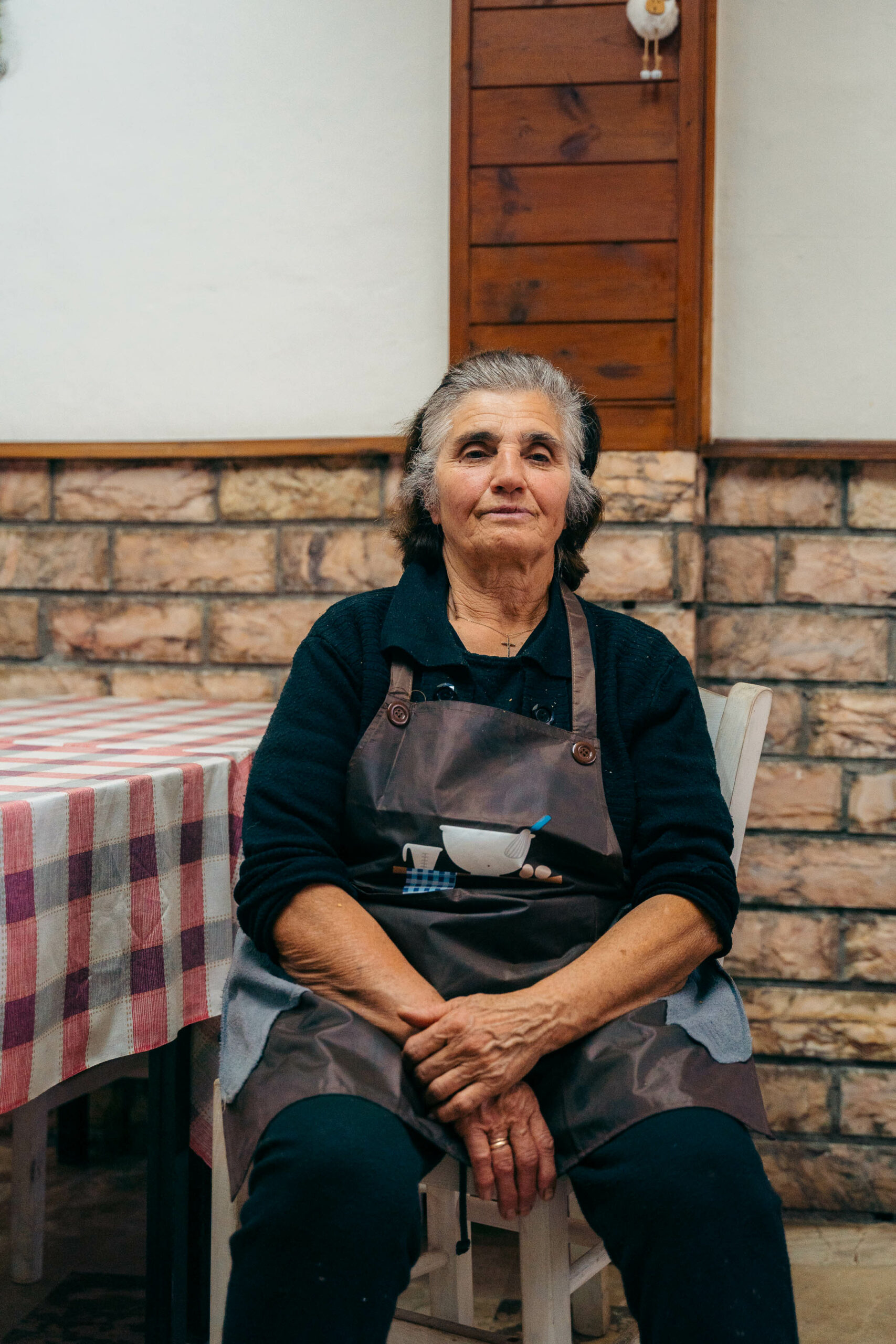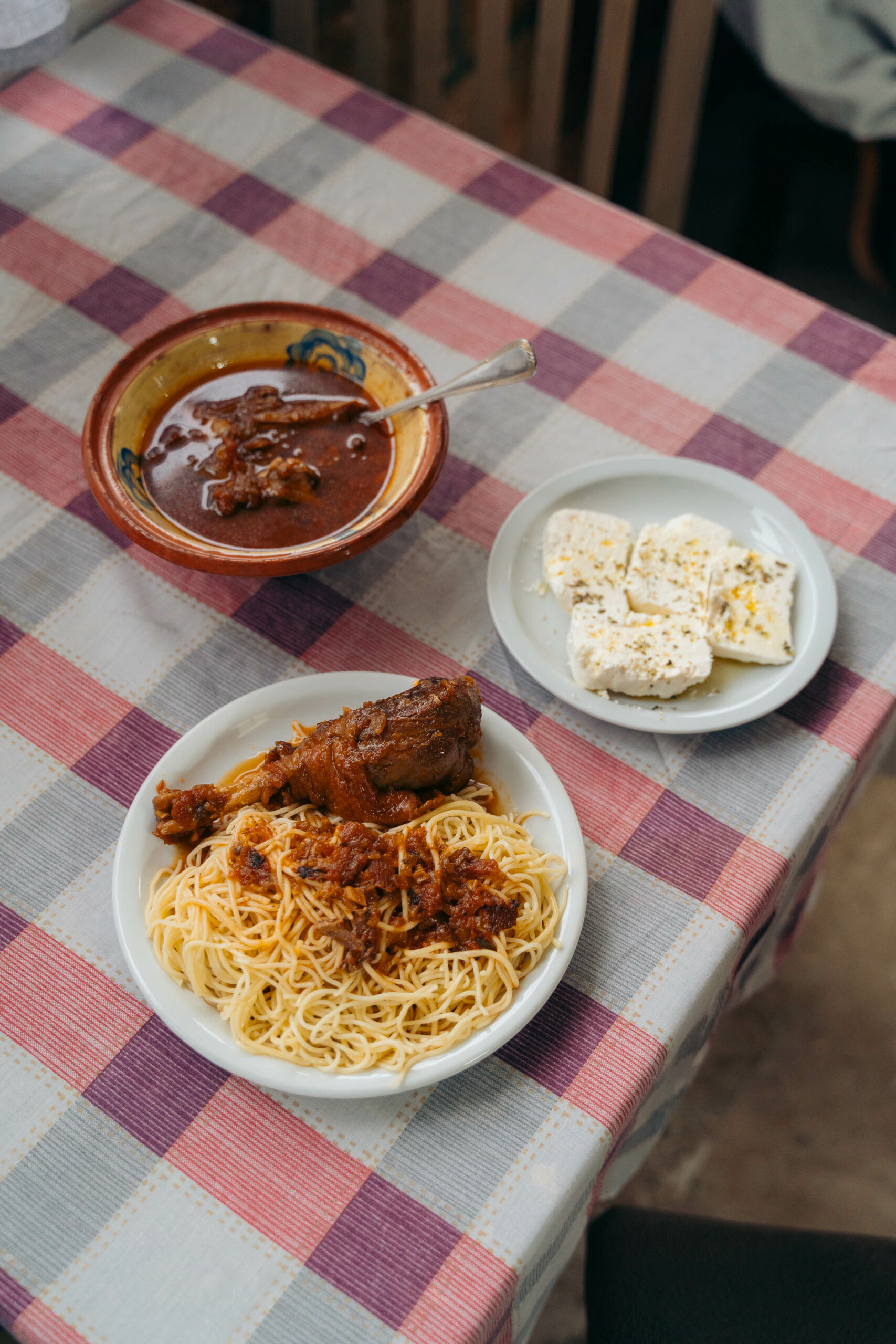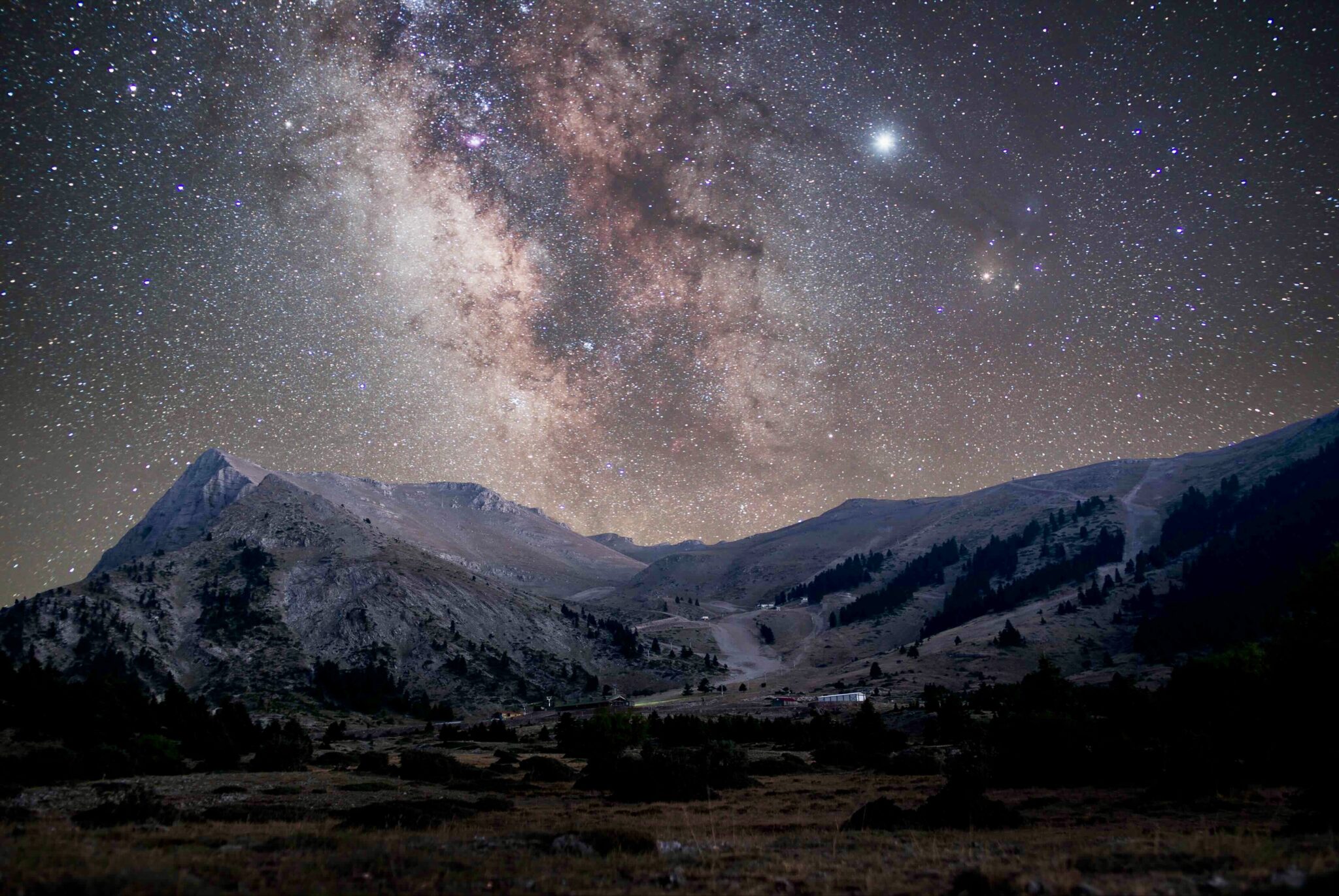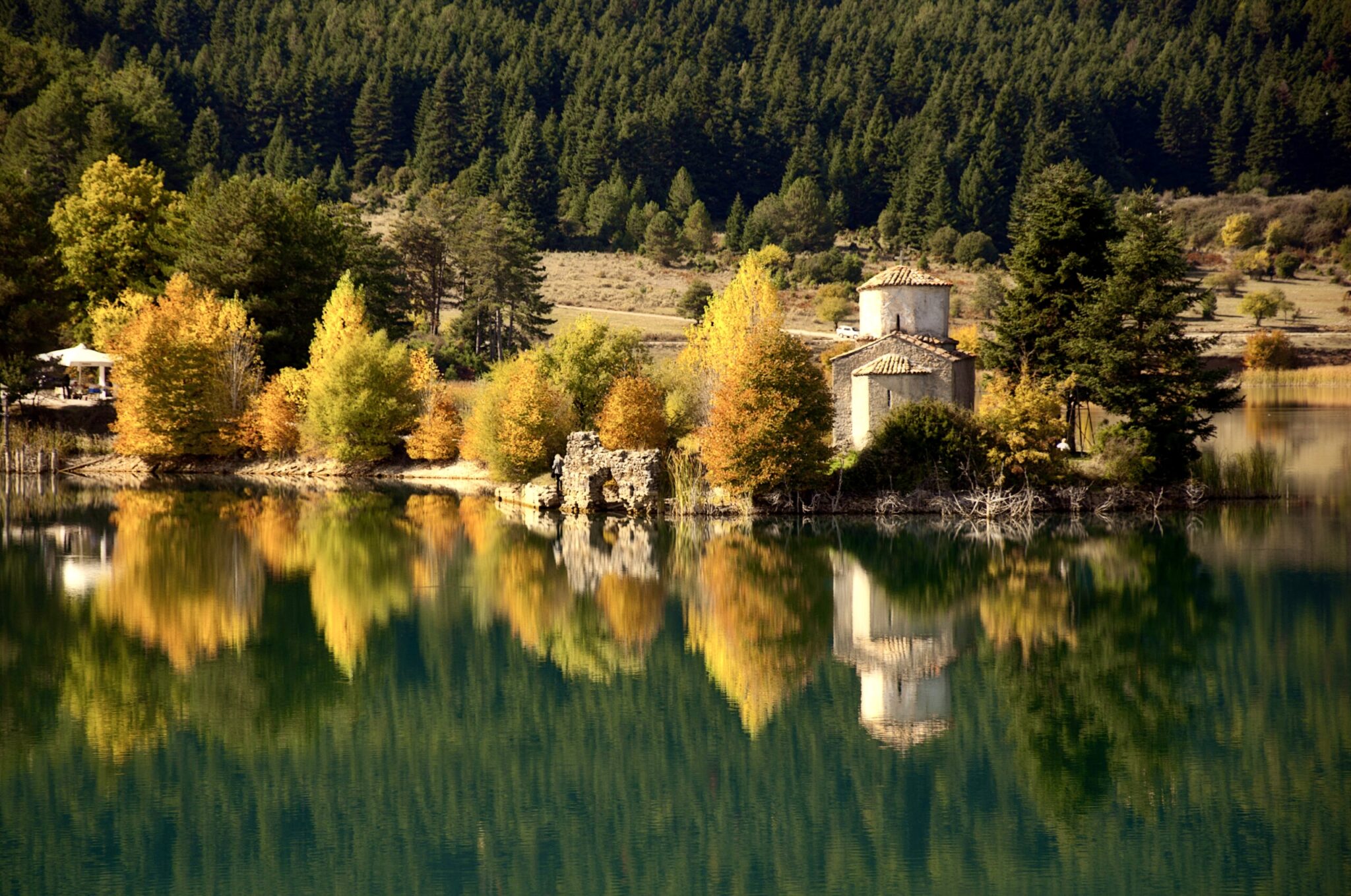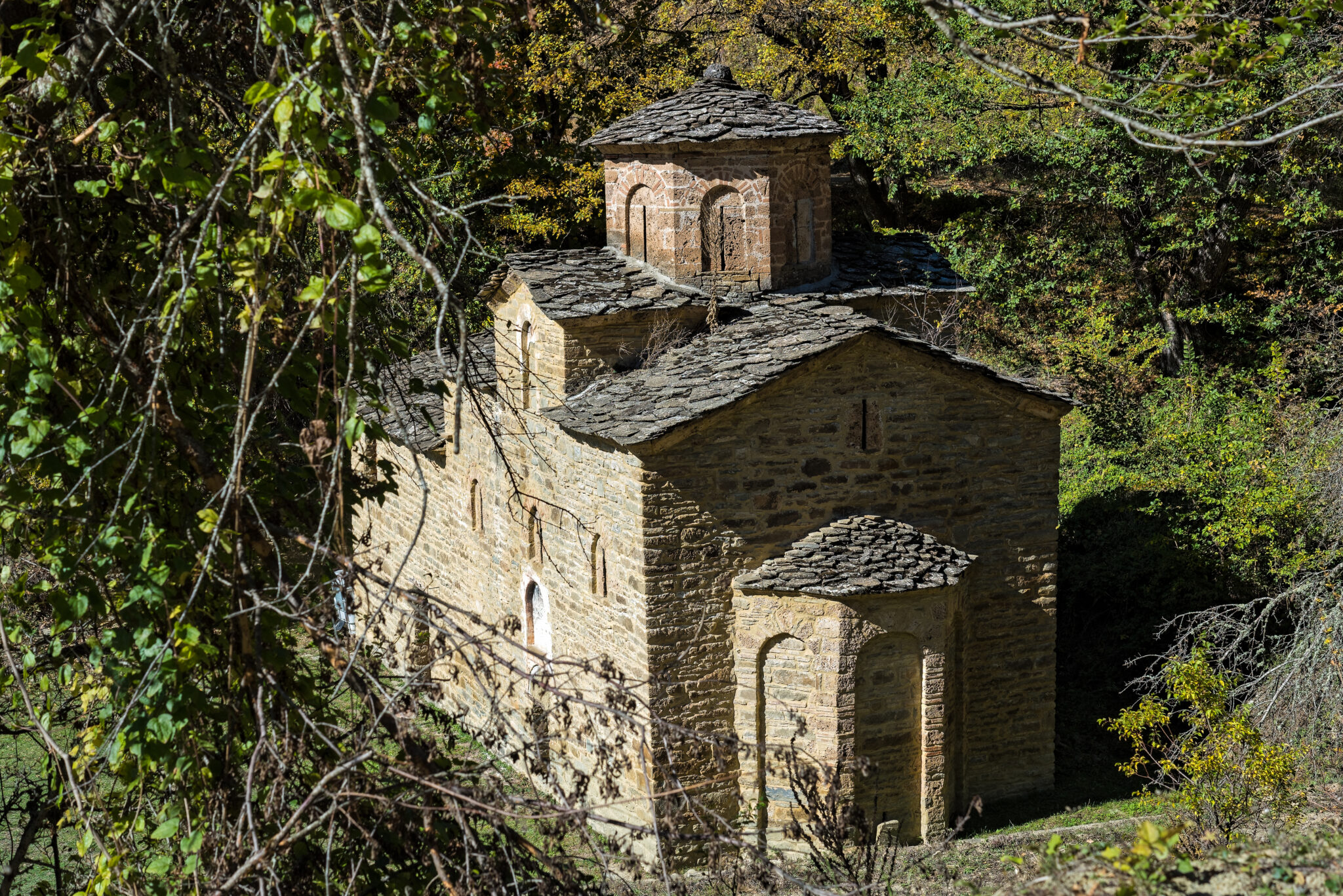On a Tuesday morning, the sun’s first rays of the day determined the colour of the Argosaronic Gulf. We were headed for Kalavryta, in the Peloponnese’s north, with the aim of bringing to the fore the travel highlights of an area ranked among the country’s top winter destinations.
Our white SUV Peugeot 3008, steady and comfortable, offered a sense of security as well as incentive for a short break away from the city. We used the car’s MirrorLink device, while the trip’s photographer, Amalia, played favourite tracks by Greek music great Sokratis Malamas from her premium Spotify subscription, without taking into consideration my persistent requests for occasional variety. Throughout the whole trip, the car’s navigation system, a standard feature of all 3008 models, guided us towards our destination.
Heading westwards, away from Athens, we left behind the Corinth Canal, and at the highway junction took the road towards Patras. The road running across the Peloponnese’s north weaved towards and away from the coastal front. A first group of clouds emerged as we approached seaside Derveni. At Diakopto, further along the coastal road, we took an uphill winding road headed south, into the Peloponnese, that would take us all the way to Kalavryta. But, before that, we made a pit-stop at a pioneering Peloponnese winery, Tetramythos, which, for years, has placed emphasis on producing natural wines and applying biodynamic methods. We met the winery’s Panagiotis Papagiannopoulos, one of the venture’s three co-owners, who shared some interesting details. The winery was established in 2004 but damaged three years later by a fire. Papagiannopoulos and his partners, Aristos and Efstathios Spanos, had it producing again just a year later. The winery produces two wine categories, organic and natural. “We produce a total of 24 wine labels, of which 10 are organic and the other 14 natural,” noted Panagiotis, adding that 85 percent of the winery’s production is exported to 22 countries. Dimitra,a skilled oenologist, guided us around the entire winery and its cellar.
Pit-stop at Mega Spileo
Heading uphill towards Kalavryta, we could not resist the temptation of stopping at the Mega Spileo monastery, a captivating setting, even though this pit-stop was on our schedule for the next day. Amalia prepared her camera, took some shots from inside the Peugeot 3008 and decisively whispered: “I’m going to fly the drone here.” The monastery is built against an enormous rock, creating a spectacular overall setting. Inside the monastery, frescoes from 1653 have been preserved along with a marvelous wood-sculpted altarpiece.
Following our stop at the Mega Spileo monastery, a steady drizzle had established itself by the time we reached the turn towards Zahlorou, a village filled with stories and legends, which we intend to cover on another occasion. A gorgeous brownish-yellow carpet of fallen leaves had formed in this area for a stunning setting to serve as a reminder, yet again, that every season of the year has unique beauty to offer. The fog had come down heavy but this was well dealt with by the Peugeot Full LED Technology lights, whose options include “foggy mode”, for driving in low-visibility conditions, as well as SDL (Static Directional Lighting), improving visibility at turns. Amalia once again began murmuring to herself in absolute delight, as she did each time we encountered beautiful imagery along our route, while looking for the right angle to capture her next shot.
Kalavryta’s nature
We reached Kalavryta around midday. I called Kostas Kakavas from 4seasonsoutdoor, who, along with his associate Nikos Prionas, prepared our plans for activities in Kalavryta’s nature. Snow had not yet fallen at this time of the year, providing us with an ideal opportunity to see what else the region has to offer besides its ski resort. We ended up at the foot of the mountain with a group of climbers who were equipped with uniforms, shoes, raincoats and other specialised gear I knew nothing about as they were preparing for their ascent. We joined in, guided by Nikos and Kostas. We walked along the trail to Keramidaki and passed by a few centuries-old chestnut trees. “They are estimated to be 700 years old,” Nikos informed us. “Parts of these trees have died off but the trees continue to live and blossom in spring,” he added. We reached an amazing chapel, Agios Ioannis, at the top of a small hill, hidden amongst gigantic trees.
At the Komokoi ceramic studio
By nighttime, we were at the village square. We took a stroll along the pedestrian street. Anthi Zisimopoulou, who maintains her ceramic studio, Komokoi, in the area, creates stylish and mostly useful ceramic pieces. She lives in Kalavryta throughout the year and feels satisfied with daily life at this town. Anthi grew up here, then moved away, but eventually decided to return for a simple, quiet life.
Comfort, security, perfect driving performance
On the morning of the next day, the temperature was close to zero degrees Celsius. The Peugeot 3008, equipped with heated seats, was a comforting thought. We took off hoping the day would offer beautiful images and lead us to people with interesting stories to tell.
Peugeot’s mid-size SUV stands out with a dynamic appearance underlining its premium orientation. Its assertive radiator grille and LED daytime running lights are among the trademarks.
The premium quality interior features an i-Cockpit in its most recent digital version, as well as a shrunken steering wheel, a trademark feature characterising all Peugeot SUVs.
For the 3008 series, the style is enhanced by the central console that separates the driver’s seat from the passenger’s, while the 10-inch touch screen at the centre of the dashboard makes it very easy to select air conditioning settings.
Directly below the screen, the beautifully designed buttons enable direct access to functions used regularly such as the radio and air conditioning system, a feature which greatly boosts practicality and comfort, highlighting the attention paid to every single detail.
At demanding turns, the diesel engine maintains torque at high values without the need for constant gear changes. The vehicle’s comfort is assured by its large space for up to five passengers and their luggage.
The Peugeot 3008 is also characterised by its wide range of engines, as it includes gasoline and diesel versions, 1,200 and 1,500cc, respectively, as well as plug-in hybrid propulsion systems offering 225 and 300 hp. The most powerful is also a four-wheel drive, while both versions can cover up to 59 kilometers on electricity power alone.
This means that most daily commutes can be carried out at a low cost with minimal environmental impact. Also, both versions are exempted from corporate tax.
A stop at the memorial of the fallen
A stop at the Kalavryta Massacre memorial, on the outskirts of Kalavryta, was essential. One of the most horrific World War II atrocities, the Kalavryta Massacre, took place here on December 13, 1943, when Nazi German soldiers executed virtually all of the town’s male population before destroying the settlement.
The few, yet sharp, bends in the road that followed led us to the top of the hill overlooking Kalavryta. Here, the trees seem to cover every free space. As we approached the turn heading for the ski resort, the fog had descended very low, making the setting even more magical.
At Planitero and the dilapidated Lousoi school
We carried on for a few more kilometres towards Planitero. The weather began to clear up and Apanokabos, or the Lousoi flatland, a fertile plain covering roughly 1,000 hectares, unfolded before us. We made a short stop at Lousoi and visited the now-dilapidated old primary school. The images here were potent. Broken windows and doors and some abandoned school books, editions used until the mid-80s, prompted thoughts about past joy, laughter, friendship and disappointment that would have been experienced at this building. We were told plans were in progress for the building to be renovated as a museum showcasing old domestic and farming tools used in the region.
At the remnants of ancient Lousoi
Lousoi, also known as Soudena, hosts the remnants of ancient Lousoi, one of the most significant ancient cities in the region, first referenced in 708 BC. The location’s sanctuary was renowned throughout ancient Greece, while a temple dedicated to Artemis has also come to light.
Petropoulos cheesery
Driving through the flatland, between corn crops and endless plains covered with clover, we reached the Petropoulos cheesery, where we were greeted by Hristos Petropoulos, who was ready to offer us a tour of the facility and its entire production process. We were shown around the cheesery and then went out to the plains, where the animals happily grazed the fresh green grass. The Petropoulos cheesery produces exceptional feta, graviera, myzithra and anthotyro cheese varieties, as well as butter and sheep’s milk yoghurt. Hristos was brought up at the cheesery. He is familiar with every single detail of the meadow and had decided, early in life, that he wanted to continue running the enterprise founded by his father Panagiotis Petropoulos back in 1992.
Our next stop, according to the schedule, was the Cave of the Lakes, near the village Kastria, 17km from Kalavryta. Discovered in 1964, it was opened to the public many years later following the completion of work permitting entry. The cave features 13 lakes at three different levels, making it unique internationally. Visitors are permitted to walk as far as 500 metres into the cave, along a special ramp. The cave’s total length runs 1,980 metres. Our guide offered us a detailed rundown on the cave as we observed its stalactite décor and natural formations in total amazement.
Mr. Michalis and village life
Along our route headed for the mountain village Planitero, 12km southeast of Kalavryta, we spontaneously met a local, Mr. Michalis, on the road, who had let his livestock out to graze. “In the summer, I take them up to the mountain and bring them down here only during the more difficult winter months,” Mr. Michalis explained from the side of the road. He had brought them down from the mountain just a few days earlier, he added. The livestock farmer likes to pass his time listening to Sport FM and enjoying the odd glass of wine, he told us. He spent 35 years living in Athens, in the Gyzi district, and supports the Panathinaikos football club, based in the area. Mr. Michalis is not happy with the team’s lack of success in recent times but said he is hopeful for the future.
At Planitero, Giorgos Rapanos works as a trout farmer at a majestic setting of plane trees and the refreshing, gushing waters of the Aroanios river. He also runs an eatery at the village, where guests can try trout cooked in a variety of ways, including smoked, as prepared by the proprietor at his smoking facility.
The beekeeper and Korys honey
At Planitero, we also met beekeeper Vassilis Koutroulakis, who devotes his time to producing quality honey. While standing to the side of the beehives, at a safe distance, we were offered insight into the complex world of honey bees, their organised colonies, and importance for humanity through their pollination activity. Vassilis Koutroulakis produces the Korys honey brand, which has earned many prizes, giving him even greater incentive to continue his effort, the beekeeper said. He produces a variety of honeys – fir, oak, forest, chestnut, mountain honey, thyme and carob. We visited the beekeeper’s fascinating workshop, which he maintains on the road headed from Planitero to Kleitoria.
We sat with the beekeeper at Kleitoria’s elegant and recently revamped square, his phone ringing frequently as he has also taken on the role of deputy mayor. This village was formerly known as Mazaika as residents of the nearby Mazi village once maintained vegetable gardens at the location. It became a commercial hub during the early days of modern Greece, in 1830, while, during the Nazi German occupation of Greece, a large part of the village was looted and destroyed, one day after the Kalavryta Massacre.
Mrs. Maria at Priolithos
The day was nearing its end and I could not wait to make it to the next stop of our journey, the village Priolithos, where Mrs. Maria, at her guesthouse and eatery, Lithos, had prepared for us her specialty, rooster spaghetti. Amalia was murmuring to herself again, preparing to take a shot, as we encountered another scenic setting on the way to Priolithos. She also wanted to be dropped off to shoot some drone footage. But my mind was, by now, firmly set on the rooster spaghetti, so I accelerated.
We parked the car and, in no time, were seated at a table by the fireplace, joined by young Thalia, Mrs. Maria’s granddaughter, who was busy drawing. Amalia came up with more photo ideas, and, after being given permission by Thalia’s parents, took some snapshots of the young girl at various spots around the guesthouse, a small and elegant place. Mrs. Maria’s breakfast is popular. She prepares breakfast using local products and recipes. It features pan-fried bread as well as pumpkin pie and cheese pie, both made with crispy pastry. I had to wait until the next morning to try these breakfast offerings, which all ended up being superb. The rooster spaghetti was incredible. I could still distinctly recall the dish’s rich flavour as I later sat to write this article. Mrs. Maria, we learned, also prepares a variety of other dishes upon arrangement (tel. +30 26920 22768, +30 6974731904), while the breakfast is a standard offering for all guests.
See the video:
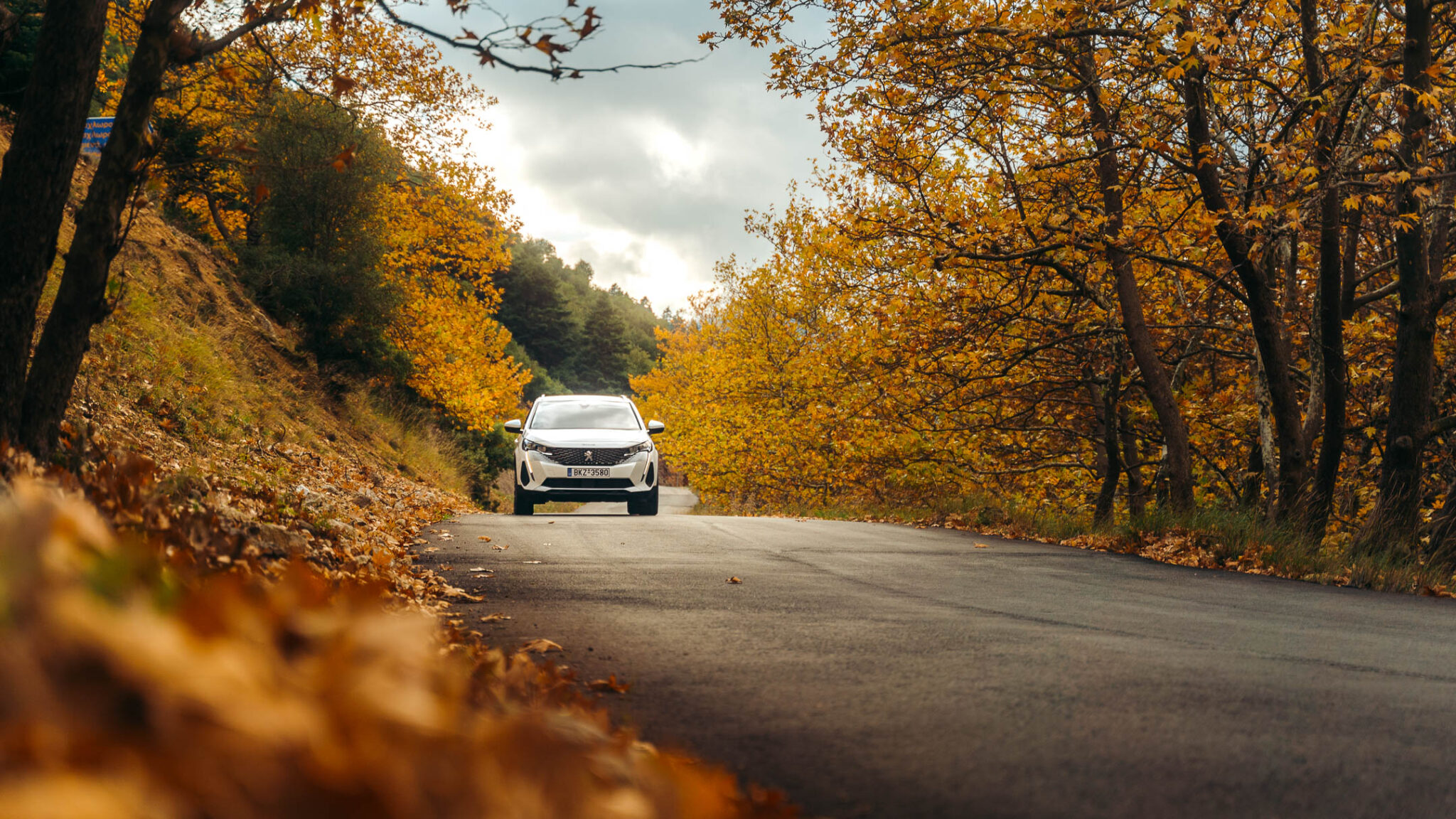
The next morning, we took the road back with our Peugeot 3008. We arrived in Athens feeling rested. The car’s sense of serenity in motion was a true pleasure. We enjoyed it all – both our road trip and the Peugeot 3008.



